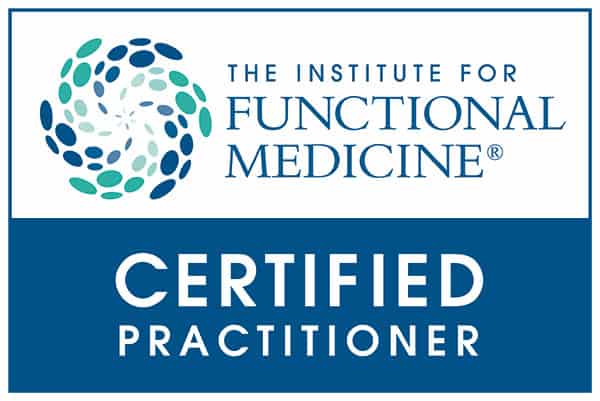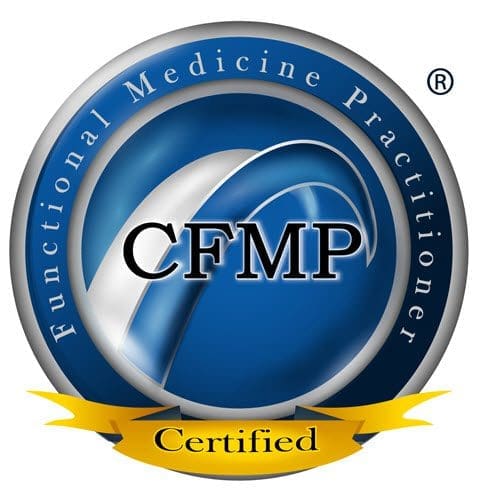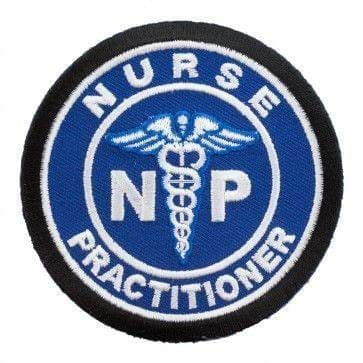Nutrition
Back Clinic Nutrition Team. Food provides people with the necessary energy and nutrients to be healthy. By eating various foods, including good quality vegetables, fruits, whole-grain products, and lean meats, the body can replenish itself with the essential proteins, carbohydrates, fats, vitamins, and minerals to function effectively. Nutrients include proteins, carbohydrates, fats, vitamins, minerals, and water. Healthy eating does not have to be hard.
The key is to eat various foods, including vegetables, fruits, and whole grains. In addition, eat lean meats, poultry, fish, beans, and low-fat dairy products and drink lots of water. Limit salt, sugar, alcohol, saturated fat, and trans fat. Saturated fats usually come from animals. Look for trans fat on the labels of processed foods, margarine, and shortenings.
Dr. Alex Jimenez offers nutritional examples and describes the importance of balanced nutrition, emphasizing how a proper diet combined with physical activity can help individuals reach and maintain a healthy weight, reduce their risk of developing chronic diseases, and promote overall health and wellness.
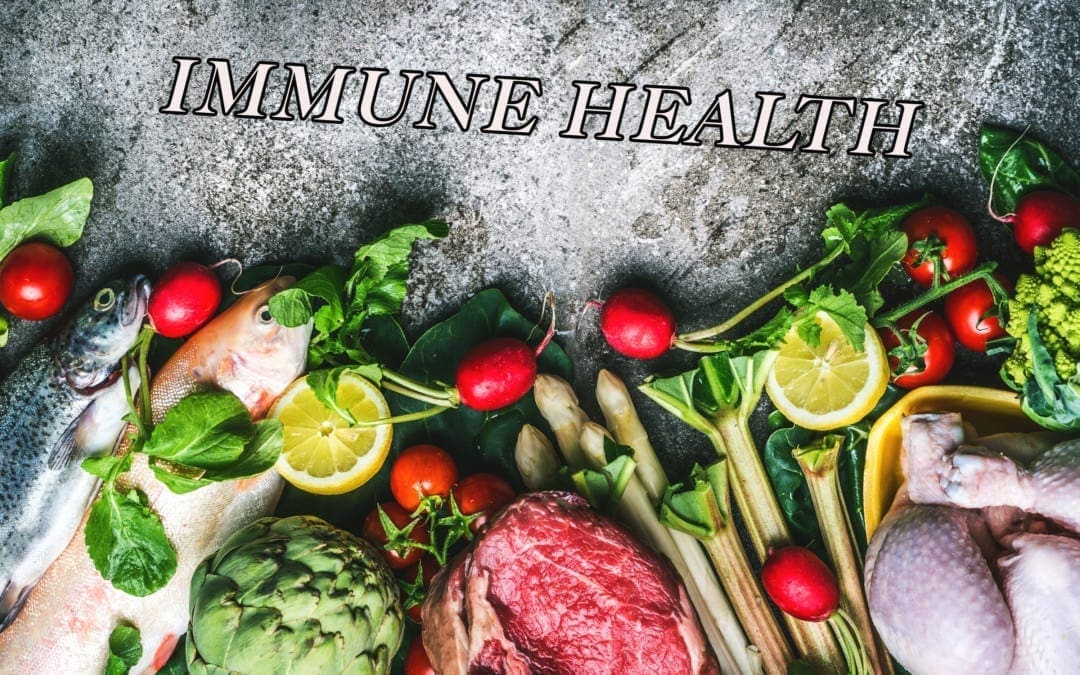
by Dr Alex Jimenez DC, APRN, FNP-BC, CFMP, IFMCP | Functional Medicine, Gastro Intestinal Health, Gut and Intestinal Health, Health, Nutrition, Wellness
Do you feel:
- Feel hungry an hour or two after eating
- Digestive problems subside with rest
- Excessive belching, burping or bloating
- Stomach pain, burning or aching 1-4 hours after eating
- Sense of fullness during and after meals
If you are experiencing any of the situations, then you might want to try these six types of food to help boost your immune system.
The Immune System
The immune system is the body�s defense mechanism that provides a robust anatomical barrier.� The gastrointestinal tract is one of the barriers. It has many defense mechanisms such as peristalsis, gastric acid, bile acids, digestive enzymes, flushing, thiocyanate, defensins, and gut flora in the body. The gut flora is the critical focus for many health professionals; however, all the essential defense mechanisms rely heavily on the gastrointestinal tract to function efficiently.
There are ways to benefit the immune system as one of the ways is to plan meals that are filled with necessary nutrients that can fight off infections. Prebiotic and probiotic-rich foods help enhance microbial diversity in the gut, while vitamin C-rich foods can mop up the free radicals that have entered the body. Another benefit is to avoid foods that promote infections like heavily processed foods, added sugars, and sodas. When it is not consumed in the body, it can help boost immunity and enrich the gut microbiome. Here are the six foods to help boost the immune system in the body.
Yellow Bell Peppers
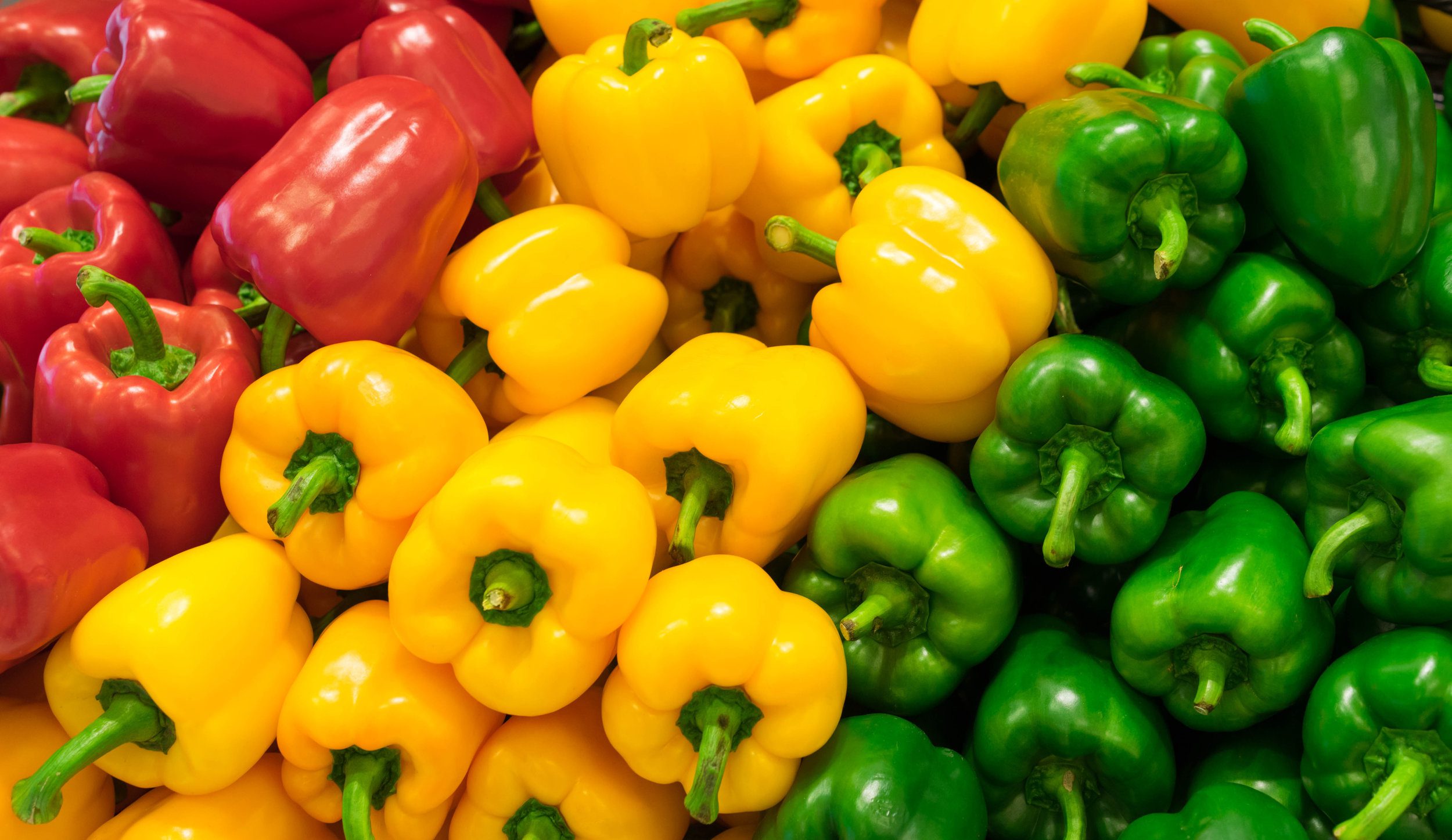
Due to being the most natural vegetable to find at a local grocery store or farmer’s markets around the world, yellow bell peppers contain more vitamin C than oranges. Since oranges contain about 78% of vitamin C, yellow bell peppers contain about 152% of vitamin C and numerous vitamins and minerals. Bell peppers (yellow, red, orange and green) contain the following:
- Vitamin B6: Bell peppers contain pyridoxine, which is an essential nutrient for the formation of red blood cells.
- Vitamin K1: This vitamin is also known as phylloquinone, which is vital for bone health and blood clotting.
- Potassium: This mineral is essential for improving heart health.
- Folate: Also known as vitamin B9, this vitamin has a variety of functions to the body and is highly essential to take during pregnancy.
- Vitamin E: This is a powerful antioxidant that is essential for healthy nerves and muscles.
- Vitamin A: Red bell peppers are high in beta carotene when consumed converts to vitamin A in the body.
Vitamin C helps boost the immune system by influencing the development and function of lymphocytes, and with about half a cup of yellow bell peppers will give the body those lymphocytes.
Guava
Guava is a traditional remedy for a range of health conditions that a person may encounter. These tropical fruits are seasonal throughout the winter. They contain about 140% of vitamin C and rich with lycopene, which is excellent for the immune system as it plays an essential role in the activities of the enzymes. Lycopene is a powerful antioxidant that has been implicated in having a potentially beneficial impact on several chronic diseases, including cancer.
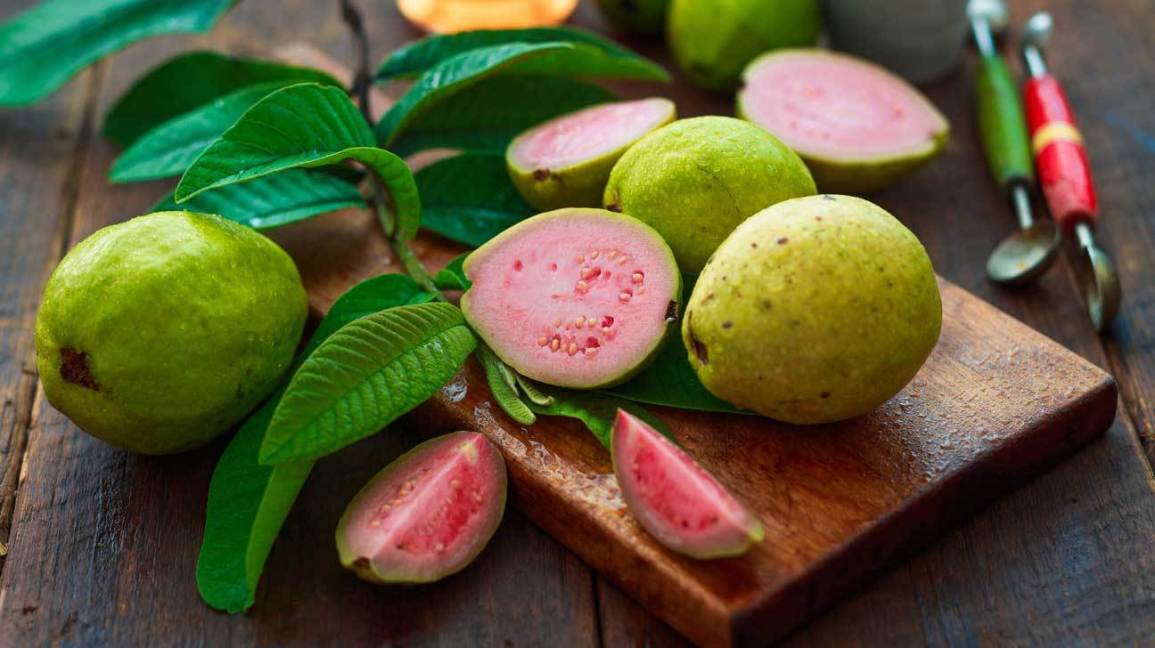
Studies have been shown that the guava fruit and the leaves have been known to have a positive effect on a range of illnesses and symptoms, including:
- Type 2 diabetes
- Menstrual cramps
- Diarrhea
- Flu
- Blood pressure
- Osteoarthritis
- Cancer
Broccoli
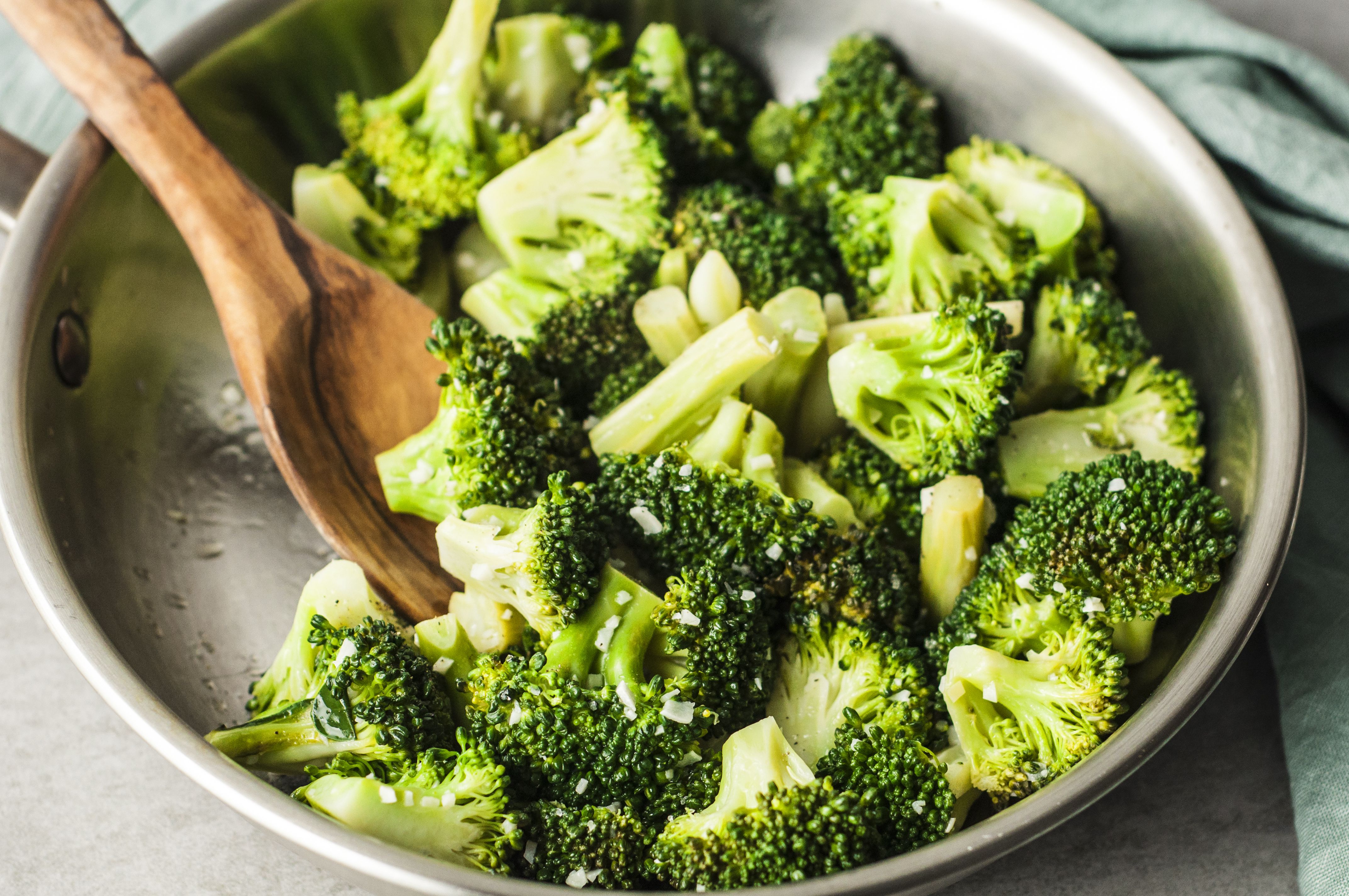
Broccoli is high in phytonutrients like vitamins A, C, and E while also containing sulforaphane. Sulforaphane is activated when broccoli or any cruciferous vegetables are chewed, cut, or damaged. Raw broccoli or broccoli sprouts contain the highest level of sulforaphane when it is not boiled or cooked. Studies have been shown that consuming broccoli has been associated with reducing many lifestyle-related health conditions like:
- Obesity
- Diabetes
- Improves digestion
- Regulate the immune system
- Helps support healthy-looking skin
- Decrease inflammation
- Lowers blood pressure
Turmeric
Turmeric is an excellent immune-boosting food since it supports healthy inflammatory pathways in the body. Inflammation in the body is implicated in the pathophysiology of many health-compromising situations that can lead to chronic illnesses. So consuming pro healthy inflammation foods like turmeric or incorporating turmeric in dishes is an ideal way to boost the immune system.
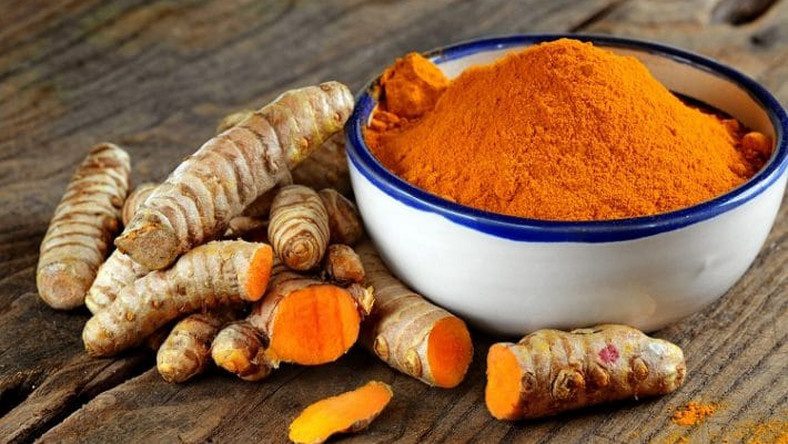
The active component in turmeric is curcumin and has potent biological properties like anti-oxidative, anti-cytotoxic, and neurorestorative properties, making it an essential staple in an immune-boosting food. Here are some of the benefits that turmeric provides to the body:
- Anti-inflammatory properties
- Pain relief on the joints
- Improves liver function
- Reducing the risk of cancer
- Preventing gut inflammation
Green Tea
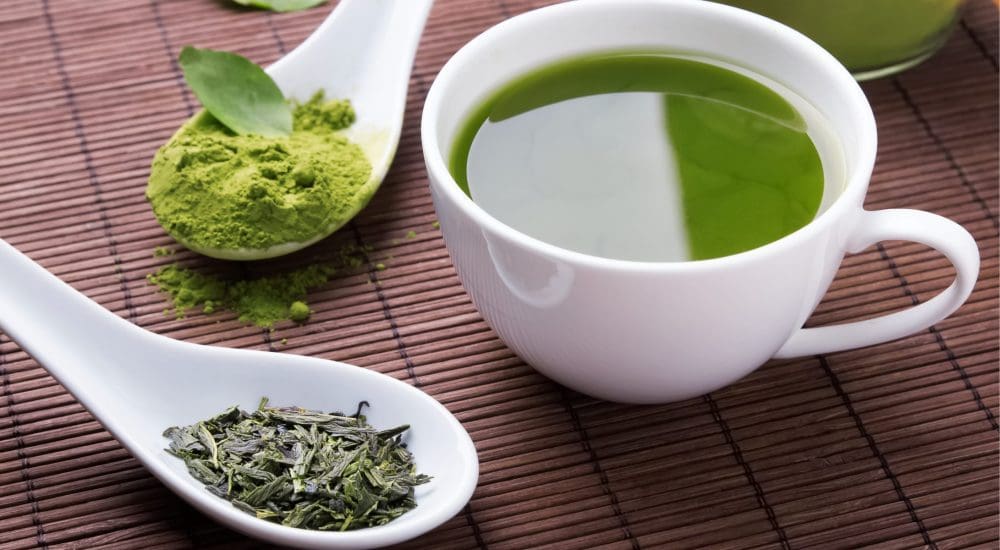
Green tea helps the body relax and contains L-theanine that helps the formation of healthy T-cells. Green tea also contains EGCG (epigallocatechin gallate) and is packed filled with flavonoids to help boost the body’s immune system. Here are some of the health benefits that green tea provides:
- Cancer prevention
- Lowers the risk of cardiovascular diseases
- Lowers cholesterol
- Decrease the risk of a stroke
- Lowers the risk of type 2 diabetes
- Help lose weight
- Helps lowers inflammation on the skin
- Improves brain function
- Helps reduce the risk of Alzheimer�s disease
Almonds
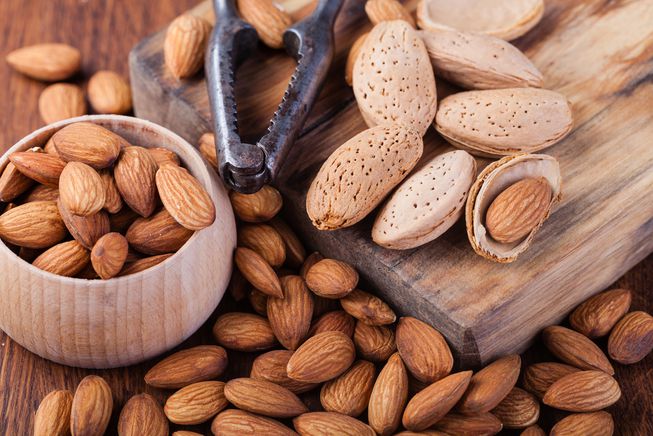
Almonds are packed filled with vitamins, minerals, protein, and fibers. It contains vitamin E and helps boost the immune system since it is a free radical scavenging antioxidant. They are easy to find in any grocery store, and the health benefits that almonds can provide are:
- Lowering cholesterol
- Reduce the risk of cancer
- Provide heart health benefits
- Reduce type 2 diabetes
- Manage weight
Conclusion
Eating these six foods can be beneficial to support a healthy immune system. They are bursting with plant-based nutrition that the body needs to make sure that chronic illnesses like inflammation in the gut. Some products help support the immune system as well as making sure that the gastrointestinal system and the sugar metabolism is supported. Eating a variety of foods that has antioxidants and anti-inflammatory properties is beneficial to the body. With the cold and flu season approaching, it is highly relevant to consume these foods to help fight against the cold and flu and providing assistance to the immune system.
October is Chiropractic Health Month. To learn more about it, check out Governor Abbott�s declaration on our website to get full details on this historic moment.
The scope of our information is limited to chiropractic, musculoskeletal and nervous health issues as well as functional medicine articles, topics, and discussions. We use functional health protocols to treat injuries or chronic disorders of the musculoskeletal system. To further discuss the subject matter above, please feel free to ask Dr. Alex Jimenez or contact us at 915-850-0900 .
Reference:
Ahmed, Touqeer, et al. �Curcuminoids Rescue Long-Term Potentiation Impaired by Amyloid Peptide in Rat Hippocampal Slices. – Semantic Scholar.� Undefined, 1 Jan. 1970, www.semanticscholar.org/paper/Curcuminoids-rescue-long-term-potentiation-impaired-Ahmed-Gilani/c66297f8d0f3b633fac263cbb81f82de1893387a.
Arnarson, Atli. �Bell Peppers 101: Nutrition Facts and Health Benefits.� Healthline, 27 Mar. 2019, www.healthline.com/nutrition/foods/bell-peppers.
Burgess, Lana. �Health Benefits of Guava: How to Use It, Nutrition, and Risks.� Medical News Today, MediLexicon International, 20 Mar. 2019, www.medicalnewstoday.com/articles/324758.php.
Du, Guang-Jian, et al. �Epigallocatechin Gallate (EGCG) Is the Most Effective Cancer Chemopreventive Polyphenol in Green Tea.� Nutrients, MDPI, 8 Nov. 2012, www.ncbi.nlm.nih.gov/pmc/articles/PMC3509513/.
Kim, DS, et al. “Curcuminoids from Curcuma Longa L. (Zingiberaceae) That Protect PC12 Rat Pheochromocytoma and Normal Human Umbilical Vein Endothelial Cells from BetaA(1-42) Insult.� Neuroscience Letters, U.S. National Library of Medicine, 27 Apr. 2001, www.ncbi.nlm.nih.gov/pubmed/11297823.
Luo, Cong, and Xian-Guo Wu. �Lycopene Enhances Antioxidant Enzyme Activities and Immunity Function in N-Methyl-N’-Nitro-N-Nitrosoguanidine-Enduced Gastric Cancer Rats.� International Journal of Molecular Sciences, Molecular Diversity Preservation International (MDPI), 2011, www.ncbi.nlm.nih.gov/pmc/articles/PMC3116194/.
Menon, Venugopal P, and Adluri Ram Sudheer. �Antioxidant and Anti-Inflammatory Properties of Curcumin.� Advances in Experimental Medicine and Biology, U.S. National Library of Medicine, 2007, www.ncbi.nlm.nih.gov/pubmed/17569207.
Nordqvist, Joseph. �Almonds: Health Benefits, Nutrition, and Risks.� Medical News Today, MediLexicon International, 14 Dec. 2017, www.medicalnewstoday.com/articles/269468.php.
Team, Biotics Education. �Key Foods to Boost the Immune System.� Biotics Research Blog, 15 Oct. 2019, blog.bioticsresearch.com/key-foods-to-boost-the-immune-system.
van Gorkom, Gwendolyn N Y, et al. �Influence of Vitamin C on Lymphocytes: An Overview.� Antioxidants (Basel, Switzerland), MDPI, 10 Mar. 2018, www.ncbi.nlm.nih.gov/pubmed/29534432.
Vermeulen, Martijn, et al. �Bioavailability and Kinetics of Sulforaphane in Humans after Consumption of Cooked versus Raw Broccoli.� Journal of Agricultural and Food Chemistry, U.S. National Library of Medicine, 26 Nov. 2008, www.ncbi.nlm.nih.gov/pubmed/18950181.
Ware, Megan. �Broccoli: Health Benefits, Nutritional Information.� Medical News Today, MediLexicon International, 8 Dec. 2017, www.medicalnewstoday.com/articles/266765.php.
Ware, Megan. �Green Tea: Health Benefits, Side Effects, and Research.� Medical News Today, MediLexicon International, 28 Mar. 2017, www.medicalnewstoday.com/articles/269538.php.
Ware, Megan. �Turmeric: Benefits and Nutrition.� Medical News Today, MediLexicon International, 24 May 2018, www.medicalnewstoday.com/articles/306981.php.
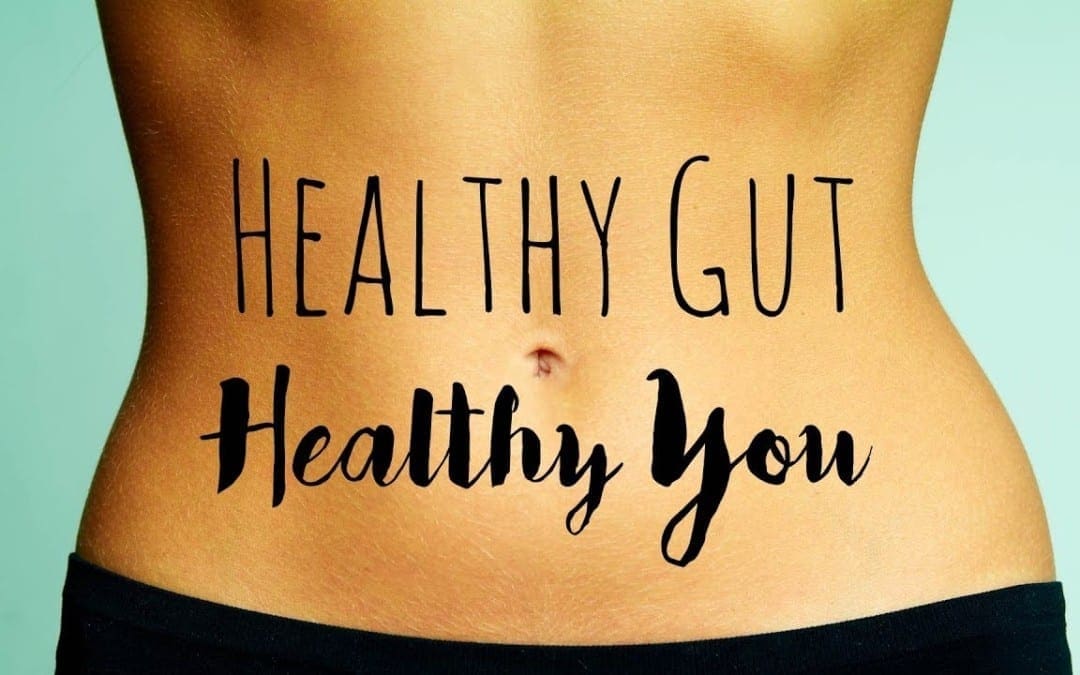
by Dr Alex Jimenez DC, APRN, FNP-BC, CFMP, IFMCP | Functional Medicine, Gastro Intestinal Health, Gut and Intestinal Health, Health, Nutrition, Vitamins, Wellness
Do you feel:
- Excessive belching, burping or bloating
- Gas immediately following a meal
- Stomach pain, burning or aching 1-4 hours after eating
- Feel hungry an hour or two after eating
- Digestive problems when lying down or bending forward
If you are experiencing any of these situations, then you should try some micronutrients for your GI tract health.
GI Tract Health
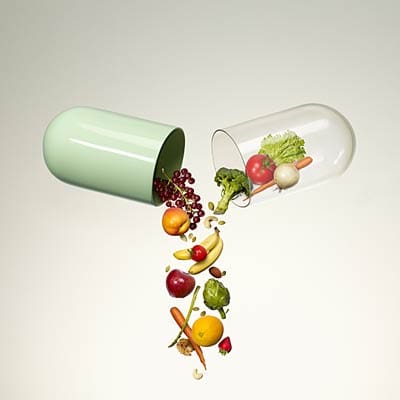
Over two thousand years ago, Hippocrates recognized that the gut plays a significant role in overall health and that modern scientific research has substantiated and solidified this view. With GI (gastrointestinal) health, advanced testing, and intricate healing protocols focused a lot when it comes to the GI tract. Some patients may benefit from the precise analysis of the makeup from their gut flora or the specific food elimination and reintroduction strategies, but not to overlook the fundamentals. Addressing the basics like general micronutrient repletion or supplementation with the foundational nutrients can be targeted for therapeutic purposes and can go a long way for an individual�s healing.
The Micronutrients
These are some of the fundamental micronutrients that the body needs to perform the everyday task. These can mostly be found in foods or in supplements and vitamins that are consumed, and even though high restriction diets can deplete these nutrients, they are still crucial for not only our gut health but for the entire body system as well.
Glutamine
The amino acid glutamine is a trusty workhorse for a healthy gut function in the body. Even though it is technically not an essential amino acid, it serves as an energy source for epithelial cells that makes up the intestinal lining for the intestines. Various circumstances like trauma, burns, or recovery from significant operations or illnesses can increase the body’s demand for glutamine.
Glutamine can be found in all protein foods like:
- Eggs
- Beef
- Skim milk
- Tofu
- White rice
- Corn
Taurine
Another amino acid is taurine is beneficial for individuals who need help with the digestion of dietary fats. Taurine is unique due to not being used in any structural protein; however, it has other roles in the body. Taurine can be synthesized from cysteine and can be obtained from animal foods specifically, sadly though it is nonexistent in plant food. Bile acids that are bound with taurine are secreted by the liver; the making of this compound is critical for bile acid function and proper fat absorption in the body.
Taurine can provide these health benefits to the body, which includes:
- Improve blood sugar control and fight diabetes
- Stop the occurrence of epilepsy
- Reduces seizure attacks
- Prevents cardiovascular diseases
- Regulates muscle contractions
- Controls and calms the central nervous system
Potassium
Potassium is the core nutrient that plays a role in a healthy GI function, especially when it comes to intestinal motility. Some disorders like fatigue and cardiac arrhythmias can be the result of potassium deficiency, and inadequate potassium may lead to delayed gastric emptying and intestinal paralysis. If the body is not treated soon, it can lead to chronic illnesses in the GI, causing unpleasant effects like bloating, abdominal pain, and constipation.
All food supplies have an abundance of potassium, but certain medications can reduce potassium levels. Factors like excessive alcohol consumption or strict chronic dieting for weight loss can be the result of inadequate potassium intake and the body status of a person.
Some of the health benefits that potassium can provide are:
- Maintains constant blood pressure
- Reduce the risk of cardiovascular diseases
- Maintains bone density
- Maintains muscle mass
Vitamin B6
B vitamins, especially vitamin B6, are highly essential to the GI tract because they make sure that the brain is also healthy as well. Deficiency of vitamin B6 can cause these symptoms:
- Tingling, numbness, and pain in the hands and feet
- Anemia
- Seizures
- Depression
- Confusion
- Weak immune system
Vitamin B6 is a water-soluble vitamin that produces the neurotransmitters serotonin and norepinephrine and forming myelin for the body. This vitamin can help boost brain function and can improve memory function. Some of the other benefits it can provide to the body are:
- Lowers the risk of dementia
- Reduce the severity of nausea during pregnancy
- Protection from air pollution
- Ensures the normal functioning of digestive enzymes
Conclusion
Even though these are the necessary foundational micronutrients and amino acids for their roles in the GI tract, it is crucial for individuals who have these micronutrient deficiencies. Even though the popularity of highly restrictive diets emphasizes on caloric restrictions for weight loss for individuals, it can limit the intake of certain nutrient-dense foods. It can cause disruptions to the gastrointestinal tract. When a person surrounds themselves with an abundance of foods with these micronutrients can live a healthy life. Some products combined with these micronutrient foods can provide support to the gastrointestinal system and help boost the sugar metabolism for the body.
October is Chiropractic Health Month. To learn more about it, check out Governor Abbott�s declaration on our website to get full details on this historic moment.
The scope of our information is limited to chiropractic, musculoskeletal and nervous health issues as well as functional medicine articles, topics, and discussions. We use functional health protocols to treat injuries or chronic disorders of the musculoskeletal system. To further discuss the subject matter above, please feel free to ask Dr. Alex Jimenez or contact us at 915-850-0900 .
References:
Brazier, Yvette. �Vitamin B-6: Benefits, Dosage, Food Sources, and Deficiency Symptoms.� Medical News Today, MediLexicon International, 27 Mar. 2017, www.medicalnewstoday.com/articles/219662.php.
Cadman, Bethany. �L-Glutamine for IBS: Benefits, Side Effects, and Research.� Medical News Today, MediLexicon International, 7 Feb. 2018, www.medicalnewstoday.com/articles/320850.php.
Caporuscio, Jessica. �What Is Taurine? Benefits and Side Effects.� Medical News Today, MediLexicon International, 26 Sept. 2019, www.medicalnewstoday.com/articles/326476.php.
Higdon, Jane. �Potassium.� Linus Pauling Institute, 14 Oct. 2019, lpi.oregonstate.edu/mic/minerals/potassium#deficiency.
Mawer, Rudy. “What Is Taurine? Benefits, Side Effects, and More.” Healthline, 27 Nov. 2018, www.healthline.com/nutrition/what-is-taurine.
Megan Ware, RDN. �Potassium: Health Benefits and Recommended Intake.� Medical News Today, MediLexicon International, 10 Jan. 2018, www.medicalnewstoday.com/articles/287212.php.
Team, DFH. �Micronutrients in GI Health.� Designs for Health, 11 Oct. 2019, blog.designsforhealth.com/node/1123.
Tinsley, Grant. “Glutamine: Benefits, Uses, and Side Effects.” Healthline, 13 Jan. 2018, www.healthline.com/nutrition/glutamine.
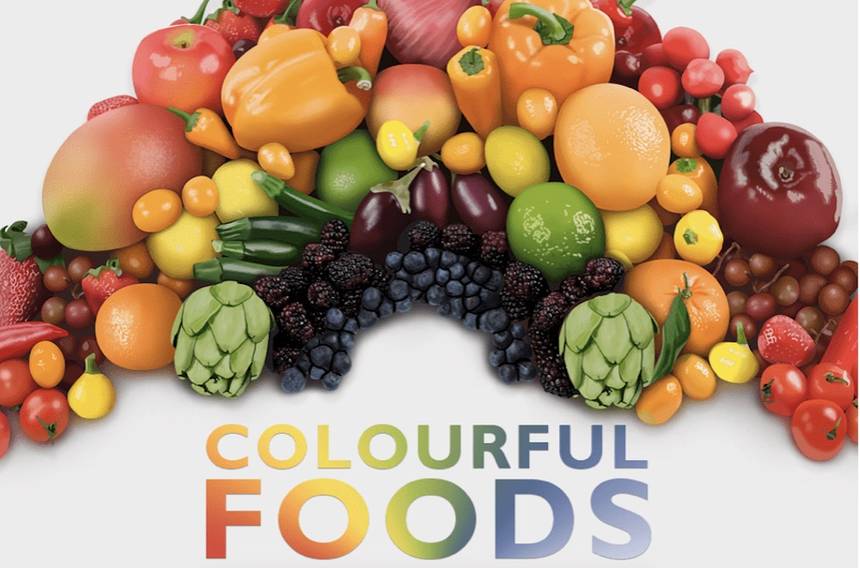
by Dr Alex Jimenez DC, APRN, FNP-BC, CFMP, IFMCP | Functional Medicine, Health, Mind Body and Spirit, Nutrition, Wellness
Do you feel:
- Crave sweets during the day
- Eating sweets does not relieve the sugar craving
- Waist girth is equal or larger than hip girth
- Difficulty losing weight
- Feel shaky, jittery or have tremors
If you are experiencing any of these situations, then try eating flavonoid filled foods to regulate your metabolic health.
Flavonoids
Going to the grocery store is an excellent way to restock on certain food items and getting food that is filled with flavonoids. Nearly all fruits and vegetables are filled with this chemical component and are proven to be beneficial to the body. Flavonoids are a class of plant-derived polyphenolic compounds that represents a larger class of phytochemicals and phytonutrients. They are responsible for protecting plants from threats like insects and animals, while also having many beneficial health effects on metabolic disorders in humans.
With their chemical structure, they are group into six primary subclasses: anthocyanins, flavanols, flavan-3-ols, flavanones, flavones, and isoflavones. They concentrated more on the skins and seeds of plants, and when they are consumed into the body, they have antioxidant and anti-inflammatory properties.
Heart Disease and Cancer
Flavonoid-rich foods have been linked to many health benefits and have been known to protect the body against heart disease and cancer. A recent study stated that individuals who consume a moderate to the high amount of flavonoid-rich foods have the lowest risk of developing cardiovascular diseases and cancer mortality. Individuals who are heavy alcohol users and cigarette smokers have a higher risk of developing these chronic illnesses.
Flavonoid Beneficial Effects on Metabolic Health
Studies provided evidence that flavonoids from citrus fruits possess serval biological activities and have emerged as efficient therapeutics for the treatment of CVD (cardiovascular disease). Citrus flavonoids can scavenge free radicals, improve glucose tolerance and insulin sensitivity, modulate lipid metabolism, and adipocyte differentiation, suppress inflammation and apoptosis, and improve endothelial dysfunction.
A journal review demonstrated how natural-occurring flavonoids could prevent diabetes and its many complications. Flavonoids can target specific molecules that are involved in regulating pathways that support beta-cell proliferation, insulin signaling and secretion, reducing apoptosis, regulating glucose metabolism in the liver, improving carbohydrate digestion, glucose uptake, and deposition in the body. In human nutrition, quercetin (the most abundant dietary flavonoid) was shown to stimulate GLUT4 translocation to the molecular signaling that sets the motion during muscle contractions in the body.
Another study summarized that the role of flavonoid in metabolic diseases was able to elevate the energy system by activating the sympathetic nervous system, increasing epinephrine and thyroid hormone release, stimulating thermogenesis, and induce browning of� WAT (white adipose tissue). Browning WAT and up-regulating BAT (brown adipose tissue) can help increase the energy expenditure and improves lipids and glucose metabolism. When this happens, flavonoids stimulate the AMPK-PGC-1?, Sirt1, and PPAR? signaling pathways. These critical pathways are involved in preventing obesity and metabolic derangement due to their role in energy metabolism in the body.
Flavonoids Prevent Neuroinflammation
Blueberries are an excellent source of flavonoids that may help brain function in older adults. They have protective effects against the development of neurocognitive disorders like Alzheimer’s and other dementia diseases. Studies have shown that anthocyanins have the responsibility for improving cognitive function and working memories on the individual�s brain.
Studies have been shown that flavonoids target astrocytes, and these are star-shaped glial cells of the CNS (central nervous system). When they are healthy, they are crucial for functional control of the CNS since they are the primary cells that are responsible for neurotropic growth, synaptic plasticity, neurogenesis, cell migration, and differentiation. When glial cells are overactivated and dysfunctional, they are associated with the pathogenesis of brain diseases and cancers, hence why flavonoid therapy is a safe treatment of brain pathologies.
Sources of Flavonoids
Flavonoids are easily attainable through eating plant-based foods and beverages. Fruits, vegetables, tea, dark chocolate, and red wine are great examples because they are filled with not only flavonoids, but they also contain anti-inflammatory and antioxidants properties. The phrase “eat the rainbow” takes a whole new meaning for anyone who is trying to eat healthier. Colorful foods with deep reds, purples, oranges, yellows, greens, blues, and black hues are filled with flavonoids. Health professionals often recommend that it is best to avoid white foods that lack nutrients like refined bread, pasta, and sugars. However, white/tan-colored foods like garlic, cauliflower, mushrooms, ginger, onions, and parsnips offer oxidant-fighting properties that are perfect for getting rid of free radicals in the body.
Conclusion
Flavonoids are a class of plant-derived polyphenolic compounds that is in a variety of fruits and vegetables that are easily attainable for anyone to eat. When it is consumed into the body, it has many beneficial health effects on the body. They contained anti-inflammatory and antioxidants that the body needs to fight off free radicals that may have entered the body through environmental factors. Some products can be paired with flavonoid foods that can offer metabolic support as well as supporting the body’s sugar metabolism. So go out and eat the flavonoid food rainbow.
October is Chiropractic Health Month. To learn more about it, check out Governor Abbott�s proclamation on our website to get full details on this historic moment.
The scope of our information is limited to chiropractic, musculoskeletal and nervous health issues as well as functional medicine articles, topics, and discussions. We use functional health protocols to treat injuries or chronic disorders of the musculoskeletal system. To further discuss the subject matter above, please feel free to ask Dr. Alex Jimenez or contact us at 915-850-0900 .
References:
Aron, Patricia M, and James A Kennedy. “Flavan-3-Ols: Nature, Occurrence, and Biological Activity.” Molecular Nutrition & Food Research, U.S. National Library of Medicine, Jan. 2008, www.ncbi.nlm.nih.gov/pubmed/18081206.
Barreca, Davide, et al. �Flavanones: Citrus Phytochemical with Health-Promoting Properties.� BioFactors (Oxford, England), U.S. National Library of Medicine, 8 July 2017, www.ncbi.nlm.nih.gov/pubmed/28497905.
Bondonno, Nicola P, et al. �Flavonoid Intake Is Associated with Lower Mortality in the Danish Diet Cancer and Health Cohort.� Nature Communications, Nature Publishing Group UK, 13 Aug. 2019, www.ncbi.nlm.nih.gov/pmc/articles/PMC6692395/.
Cannon, Barbara, and Jan Nedergaard. �Brown Adipose Tissue: Function and Physiological Significance.� Physiological Reviews, U.S. National Library of Medicine, Jan. 2004, www.ncbi.nlm.nih.gov/pubmed/14715917.
Erdman, John W, et al. �Effects of Cocoa Flavanols on Risk Factors for Cardiovascular Disease.� Asia Pacific Journal of Clinical Nutrition, U.S. National Library of Medicine, 2008, www.ncbi.nlm.nih.gov/pubmed/18296357.
Lila, Mary Ann. �Anthocyanins and Human Health: An In Vitro Investigative Approach.� Journal of Biomedicine & Biotechnology, Hindawi Publishing Corporation, 2004, www.ncbi.nlm.nih.gov/pmc/articles/PMC1082894/.
Mahmoud, Ayman M, et al. �Beneficial Effects of Citrus Flavonoids on Cardiovascular and Metabolic Health.� Oxidative Medicine and Cellular Longevity, Hindawi, 10 Mar. 2019, www.ncbi.nlm.nih.gov/pmc/articles/PMC6431442/.
Matias, Isadora, et al. �Functions of Flavonoids in the Central Nervous System: Astrocytes as Targets for Natural Compounds.� Neurochemistry International, Pergamon, 2 Feb. 2016, www.sciencedirect.com/science/article/pii/S0197018616300092?via%3Dihub.
Panche, A N, et al. �Flavonoids: an Overview.� Journal of Nutritional Science, Cambridge University Press, 29 Dec. 2016, www.ncbi.nlm.nih.gov/pmc/articles/PMC5465813/.
Richter, Erik A, and Mark Hargreaves. �Exercise, GLUT4, and Skeletal Muscle Glucose Uptake.� Physiological Reviews, U.S. National Library of Medicine, July 2013, www.ncbi.nlm.nih.gov/pubmed/23899560.
Team, DFH. �Stock Your Fridge with Flavonoids.� Designs for Health, 1 Oct. 2019, blog.designsforhealth.com/node/1116.
Trayhurn, P, and J H Beattie. �Physiological Role of Adipose Tissue: White Adipose Tissue as an Endocrine and Secretory Organ.� The Proceedings of the Nutrition Society, U.S. National Library of Medicine, Aug. 2001, www.ncbi.nlm.nih.gov/pubmed/11681807.
Yu, Jie, et al. �Isoflavones: Anti-Inflammatory Benefit and Possible Caveats.� Nutrients, MDPI, 10 June 2016, www.ncbi.nlm.nih.gov/pmc/articles/PMC4924202/.

by Dr Alex Jimenez DC, APRN, FNP-BC, CFMP, IFMCP | Functional Medicine, Health, Hormone Balance, Nutrition, Supplements, Wellness
All fats, including saturated fatty acids, have very important roles in the body. The most important fats are the ones that the body can�t make and must be coming from the foods that a person eats. �Essential fatty acids are lipids that are involved in various biological processes and produce many compounds when they are metabolized in the body. The two primary EFAs (essential fatty acids) are linoleic acid (Omega-6) and alpha-linolenic acid (Omega-3). These two omegas are essential for the body since they are consumed from dietary sources because the body does not have the ability to synthesize them and EFAs are synthesized into prostaglandins, which are necessary for proper hormone signaling in the body.
Omega-6
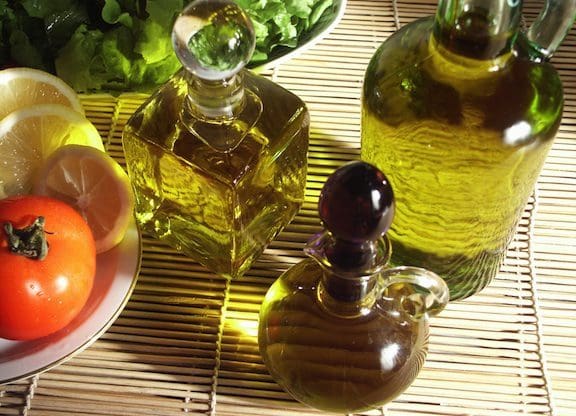
Omega-6 fatty acids or linoleic acid are polyunsaturated fatty acids that are primarily used for energy and can be converted into longer omega-6 fats called ARA (arachidonic acid). ARA are used to produce eicosanoids, but they are prone to be more pro-inflammatory. Studies have shown that pro-inflammatory eicosanoids are important chemicals in the immune systems, however, when there are too many to produce, they can increase inflammation and inflammatory diseases in the body.
Researchers state that even though omega-6 fats are essential for a healthy body, the modern Western diet is making individuals consume more omega-6 fatty acids than the recommended amount. In a regular healthy diet, the ratio of omega-6 to omega-3s is 4:1 or less. In a Western diet however, the ratio is between 10:1 and 50:1.
Even though, an individual should consume the recommended amount of omega-6 fatty acids, research has shown that omega-6 fatty acids can lower the risk of cardiovascular diseases and treat symptoms that cause chronic diseases. In certain oils that contains omega-6 fatty acids, GLA (gamma-linolenic acid), which is an anti-inflammatory component and when consumed it converts to DGLA (dihomo-gamma-linolenic acids), which has anti-inflammatory and anti-proliferative properties against cancer.
A study has shown that when an individual takes a high dose of GLA in their diet, it can significantly reduce a number of symptoms caused by rheumatoid arthritis, and another study found that taking GLA supplements with a breast cancer drug is more effective in lowering breast cancer.
Omega-3
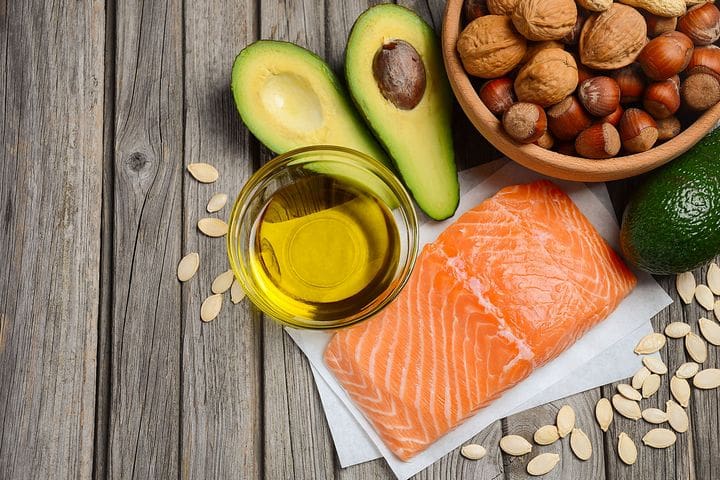
Just like omega-6 fatty acids, omega-3 fatty acids are polyunsaturated fats that play important roles in providing a number of health benefits for a functional body. Omega-3 fatty acids contain three important compounds that are found in foods, they are ALA (alpha-linolenic acid); which converts into energy for the body, DHA (docosahexaenoic acid); which is the key component for a functional brain and retina, and lastly, EPA (eicosapentaenoic acid); which has cardiovascular benefits including lowering serum triglyceride and non-HDL-C (non-high-density lipoprotein cholesterol) in the body.
When it comes to those three important components in omega-3s, ALA is mainly found in plants, while DHA and EPA are found in mostly animal products and algae. What makes these three components work well in the omega-3 supplements is that they are a crucial part of the human cell membrane and improve heart health, support mental health, decrease liver fats and fight inflammation.
With omega-3 fatty acids, lots of people don�t consume it as much as omega-6, due to not eating a lot of fatty fish as often and consuming omega-6 through fried food being cooked in refined vegetable oils. To balance a healthy diet, individuals can take an omega-3 supplement to balance out the omega-6 consumption to make sure the body is receiving these fatty health benefits.
Prostaglandins
Prostaglandins are a component of this regulatory system, they affect multiple hormone synthesis and secretion pathways in the hypothalamus-pituitary axis. They are a group of endogenously occurring acidic lipids that appear to play a role in the reproductive physiology.
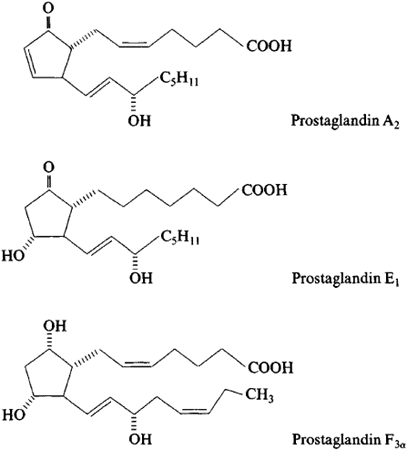
Since prostaglandins are bioactive lipids, they exert an autocrine or paracrine function by binding to specific GPCRs (G-protein-coupled receptors) to activate intracellular signaling and gene transcription. As key regulators of reproductive processes, prostaglandins has many functions like having a role in the hypothalamic and pituitary control of gonadotropin secretion, ovulation, in luteinization and in the corpus luteum regression.
Prostaglandins also play a key role in the inflammatory response in the body. Their biosynthesis is significantly increased in inflamed tissues and can contribute to the development of the cardinal signs of acute inflammation in the body.
Researchers stated that prostaglandins have a plethora of actions in the central nervous system that can affect the progress of inflammation in the body differently, however, further studies are being tested to inhibit the role of these lipid mediators.
Conclusion
All fats play a very important role in the body. Essential fatty acids produce many compounds in the body when they are being metabolized in the body. Since the body can not produce essential fatty acids, they have to be consumed through food. The two important essential fatty acids are omega-6 and omega-3. These two fatty supplements help the body gain the nutrients the body needs to synthesize. Prostaglandins are also a key role in the body since they affect the pathways in the hypothalamus-pituitary axis and plays the role of regulating the reproductive physiology. Some products are formulated to target the immune support by creating micronized structure to increase the surface-to-volume ratio of particles to be more available to enzymatic actions.
October is Chiropractic Health Month. To learn more about it, check out Governor Abbott�s proclamation on our website to get full details on this declaration.
The scope of our information is limited to chiropractic, musculoskeletal and nervous health issues as well as functional medicine articles, topics, and discussions. We use functional health protocols to treat injuries or chronic disorders of the musculoskeletal system. To further discuss the subject matter above, please feel free to ask Dr. Alex Jimenez or contact us at 915-850-0900 .
References:
Bardin, T P. �The Role of Prostaglandins in Reproductive Physiology.� The Ohio State Medical Journal, U.S. National Library of Medicine, Oct. 1970, www.ncbi.nlm.nih.gov/pubmed/4918753.
Behrman, H R. �Prostaglandins in Hypothalamo-Pituitary and Ovarian Function.� Annual Review of Physiology, U.S. National Library of Medicine, 1979, www.ncbi.nlm.nih.gov/pubmed/373605.
Brinton, Eliot A, and R Preston Mason. �Prescription Omega-3 Fatty Acid Products Containing Highly Purified Eicosapentaenoic Acid (EPA).� Lipids in Health and Disease, BioMed Central, 31 Jan. 2017, www.ncbi.nlm.nih.gov/pubmed/28137294.
Calder, Philip C. �n-3 Polyunsaturated Fatty Acids, Inflammation, and Inflammatory Diseases.� The American Journal of Clinical Nutrition, U.S. National Library of Medicine, June 2006, www.ncbi.nlm.nih.gov/pubmed/16841861.
Di Pasquale, Mauro G. �The Essentials of Essential Fatty Acids.� Journal of Dietary Supplements, U.S. National Library of Medicine, 2009, www.ncbi.nlm.nih.gov/pubmed/22435414.
Dinan, Timothy, et al. �Investigating the Inflammatory Phenotype of Major Depression: Focus on Cytokines and Polyunsaturated Fatty Acids.� Journal of Psychiatric Research, U.S. National Library of Medicine, Jan. 2009, www.ncbi.nlm.nih.gov/pubmed/18640689.
Gibson, Robert A, et al. �Conversion of Linoleic Acid and Alpha-Linolenic Acid to Long-Chain Polyunsaturated Fatty Acids (LCPUFAs), with a Focus on Pregnancy, Lactation and the First 2 Years of Life.� Maternal & Child Nutrition, U.S. National Library of Medicine, Apr. 2011, www.ncbi.nlm.nih.gov/pubmed/21366864.
Guesnet, Philippe, and Jean-Marc Alessandri. �Docosahexaenoic Acid (DHA) and the Developing Central Nervous System (CNS) – Implications for Dietary Recommendations.� Biochimie, U.S. National Library of Medicine, Jan. 2011, www.ncbi.nlm.nih.gov/pubmed/20478353.
Gunnars, Kris. �What Are Omega-3 Fatty Acids? Explained in Simple Terms.� Healthline, 23 May 2019, www.healthline.com/nutrition/what-are-omega-3-fatty-acids.
Innes, Jacqueline K, and Philip C Calder. �Omega-6 Fatty Acids and Inflammation.� Prostaglandins, Leukotrienes, and Essential Fatty Acids, U.S. National Library of Medicine, May 2018, www.ncbi.nlm.nih.gov/pubmed/29610056.
Jabbour, H N, and K J Sales. �Prostaglandin Receptor Signalling and Function in Human Endometrial Pathology.� Trends in Endocrinology and Metabolism: TEM, U.S. National Library of Medicine, Oct. 2004, www.ncbi.nlm.nih.gov/pubmed/15380812.
Kapoor, Rakesh, and Yung-Sheng Huang. �Gamma Linolenic Acid: an Antiinflammatory Omega-6 Fatty Acid.� Current Pharmaceutical Biotechnology, U.S. National Library of Medicine, Dec. 2006, www.ncbi.nlm.nih.gov/pubmed/17168669.
Kenny, F S, et al. �Gamma Linolenic Acid with Tamoxifen as Primary Therapy in Breast Cancer.� International Journal of Cancer, U.S. National Library of Medicine, 1 Mar. 2000, www.ncbi.nlm.nih.gov/pubmed/10699943.
Khanapure, Subhash P, et al. �Eicosanoids in Inflammation: Biosynthesis, Pharmacology, and Therapeutic Frontiers.� Current Topics in Medicinal Chemistry, U.S. National Library of Medicine, 2007, www.ncbi.nlm.nih.gov/pubmed/17305573.
Kim, Kyu-Bong, et al. �?-Linolenic Acid: Nutraceutical, Pharmacological and Toxicological Evaluation.� Food and Chemical Toxicology : an International Journal Published for the British Industrial Biological Research Association, U.S. National Library of Medicine, Aug. 2014, www.ncbi.nlm.nih.gov/pubmed/24859185.
M.Shewchuk, Brian. �Prostaglandins and n-3 Polyunsaturated Fatty Acids in the Regulation of the Hypothalamic�Pituitary Axis.� Prostaglandins, Leukotrienes and Essential Fatty Acids, Churchill Livingstone, 28 Sept. 2014, www.sciencedirect.com/science/article/abs/pii/S0952327814001495.
Parker, Helen M, et al. �Omega-3 Supplementation and Non-Alcoholic Fatty Liver Disease: a Systematic Review and Meta-Analysis.� Journal of Hepatology, Centre for Reviews and Dissemination (UK), Apr. 2012, www.ncbi.nlm.nih.gov/pubmed/22023985.
Petersen, Martin, et al. �Effect of Fish Oil versus Corn Oil Supplementation on LDL and HDL Subclasses in Type 2 Diabetic Patients.� Diabetes Care, U.S. National Library of Medicine, Oct. 2002, www.ncbi.nlm.nih.gov/pubmed/12351465.
Ph.D., Catharine Paddock. �Could Omega-6 Fatty Acids Help Us Live Longer?� Medical News Today, MediLexicon International, 20 Mar. 2018, www.medicalnewstoday.com/articles/321266.php.
Robertson, Ruairi. �Omega-3-6-9 Fatty Acids: A Complete Overview.� Healthline, 15 Jan. 2017, www.healthline.com/nutrition/omega-3-6-9-overview.
Simopoulos, Artemis P. �The Importance of the Omega-6/Omega-3 Fatty Acid Ratio in Cardiovascular Disease and Other Chronic Diseases.� Experimental Biology and Medicine (Maywood, N.J.), U.S. National Library of Medicine, June 2008, www.ncbi.nlm.nih.gov/pubmed/18408140.
Wang, Xiaoping, et al. �Multiple Roles of Dihomo-?-Linolenic Acid against Proliferation Diseases.� Lipids in Health and Disease, BioMed Central, 14 Feb. 2012, www.ncbi.nlm.nih.gov/pmc/articles/PMC3295719/.
Weylandt, Karsten H, et al. �Omega-3 Polyunsaturated Fatty Acids: The Way Forward in Times of Mixed Evidence.� BioMed Research International, Hindawi Publishing Corporation, 2015, www.ncbi.nlm.nih.gov/pmc/articles/PMC4537707/.
Zurier, R B, et al. �Gamma-Linolenic Acid Treatment of Rheumatoid Arthritis. A Randomized, Placebo-Controlled Trial.� Arthritis and Rheumatism, U.S. National Library of Medicine, Nov. 1996, www.ncbi.nlm.nih.gov/pubmed/8912502.

by Dr Alex Jimenez DC, APRN, FNP-BC, CFMP, IFMCP | Functional Medicine, Nutrition, Remedies, Wellness
The cold and flu season can cause havoc on a person�s body during the colder seasons. An individual can feel overly tired, congested, the body has aches and shivers, and lastly, the immune system will work overtime to help fight off the germs. When this happens, many remedies can help these symptoms when a person feels a little bit under the weather. They help the body give that extra boost to recover from cold and flu symptoms and can provide the body a chance to rest.
When anyone is starting to feel sick, an important note is to try and get as much rest as they possibly can. It can be anything like getting more sleep, scaling down on exercising, or take some time off of work to heal more quickly. In this article, here are some of the top 5 foods to help the body improve and recover from the cold and flu season, with some additional remedies to boost the immune system as well.
Soups
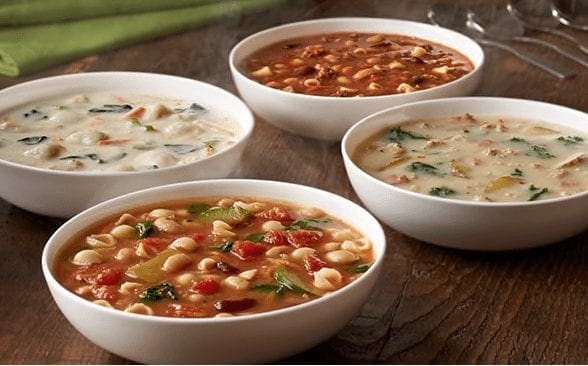
Soups are one of the most excellent sources of feeling better during cold and flu season. They are easily digestible and helps soothe the body by containing ample waters to keep it hydrated. Water-based soups like chicken noodle, Hippocrates soup, and vegetable soup incorporates all the essential nutrients that the body needs when it is the colder season, helping to combat the flu.
Garlic
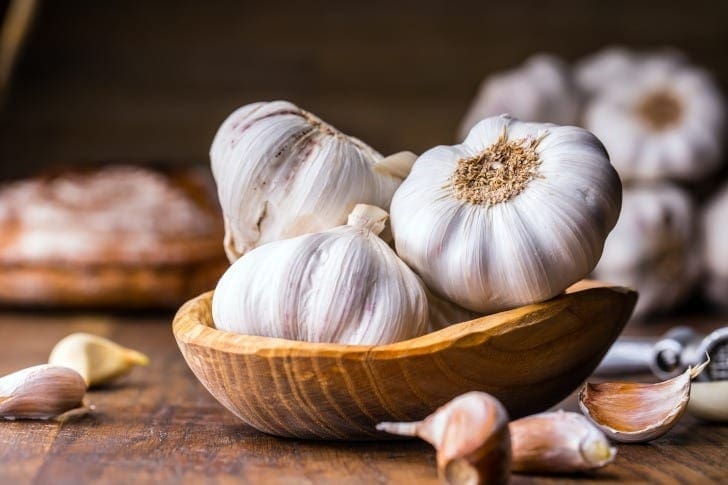
Garlic has a wide variety of health benefits that can help the body during the cold and flu season. It can help reduce the risk of heart diseases, improve mental health, and enhance the immune system. Studies have shown that whole garlic contains a compound called alliin. When garlic is chopped, chewed, or crushed, it will help boost the disease-fighting response of white blood cells in the body when they are encountering viruses that cause the common cold or flu.
Studies also stated that garlic helps support neurodegenerative health, cardiovascular health, and compromised liver functioning from excessive alcohol use. Researchers at the Toxicology, School of Public Health, Shandong University in China, have isolated the garlic compound, DADS (diallyl disulfide), as the main compound that helps protects the body from ethanol-induced oxidative stress.
Foods That Are Rich in Vitamin C
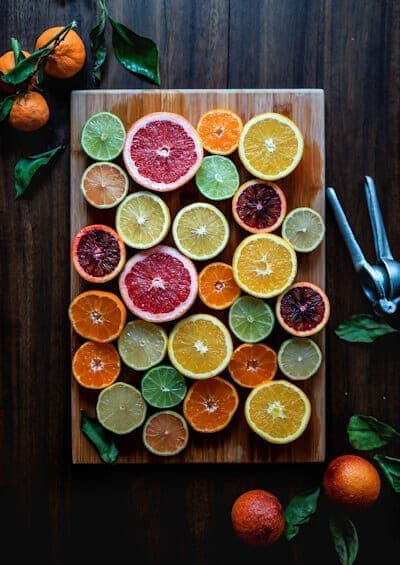
Foods that contain vitamin C is highly essential when it comes to battling the cold or flu. Vitamin C is a powerful, potent supplement that has antioxidants and immune system boosters that protects the body from environmental factors like reducing oxidative stress, prevent and treat respiratory and systemic infections. With vitamin C-rich foods, they contain essential minerals, vitamins, and high in flavonoids that help individuals who don�t feel like eating or preferring bland foods to consume when they are sick. Initially, they can eat vitamin C rich food by either juice or soup. Here are some delicious fruits and juices that contain a high amount of vitamin C to combat the cold and flu.
- Guava
- Strawberries
- Tomato juice
- Oranges and Orange juice
Apple Cider Vinegar
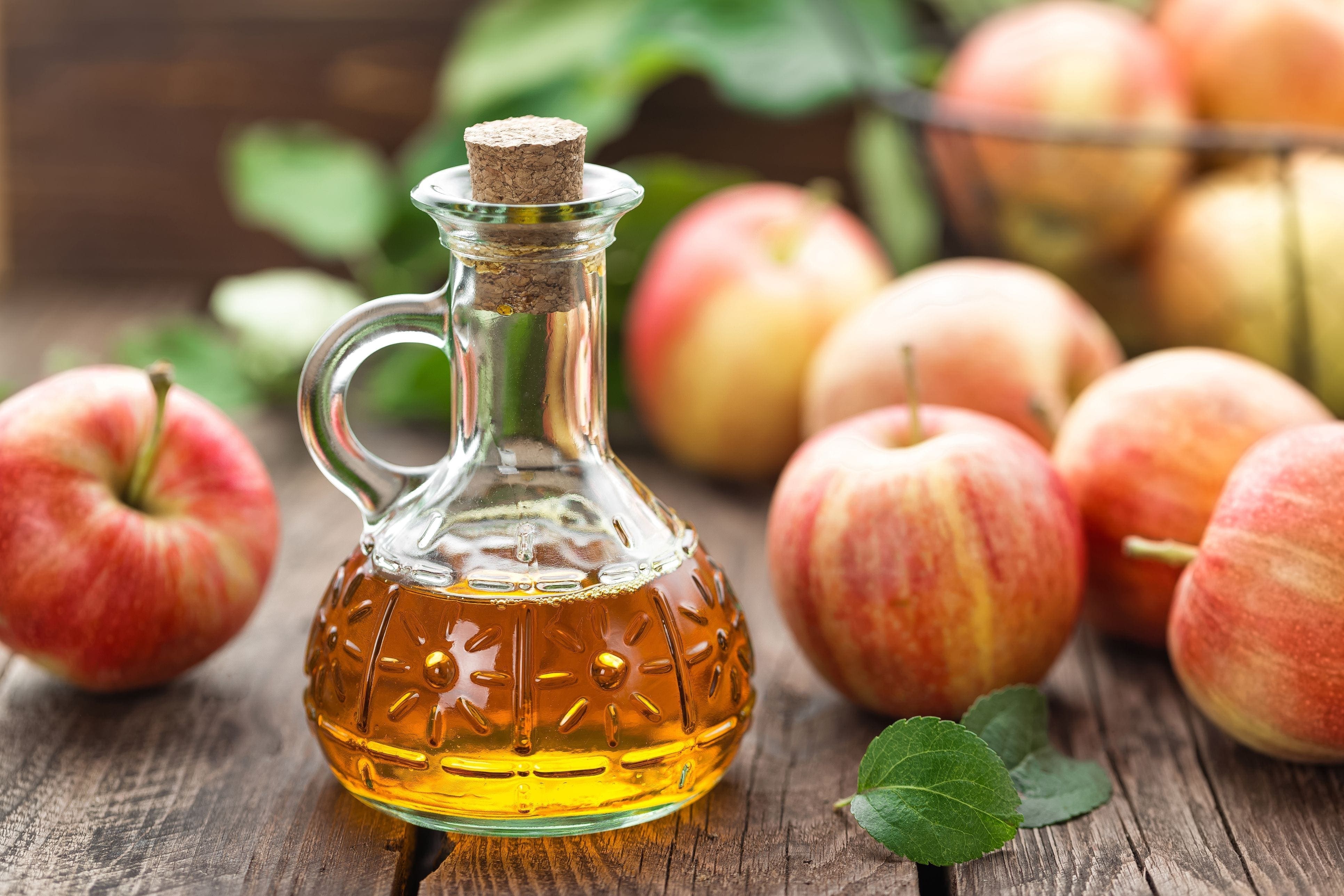
Apple Cider Vinegar can provide many minerals and enzymes that can fight off pathogens that can be caused by the common cold or flu. A 2011 study has shown that the probiotics in apple cider vinegar have an immune-boosting effect that can shorten the duration of a cold when an individual drinks apple cider vinegar. Taking apple cider vinegar with a glass of water can also help the body when it is not cold and flu season. Apple cider vinegar helps inhibits bacterial growth, can support healthy blood pressure levels in the body, as well as an excellent addition to the medicine cabinet during cold and flu season.
Ginger
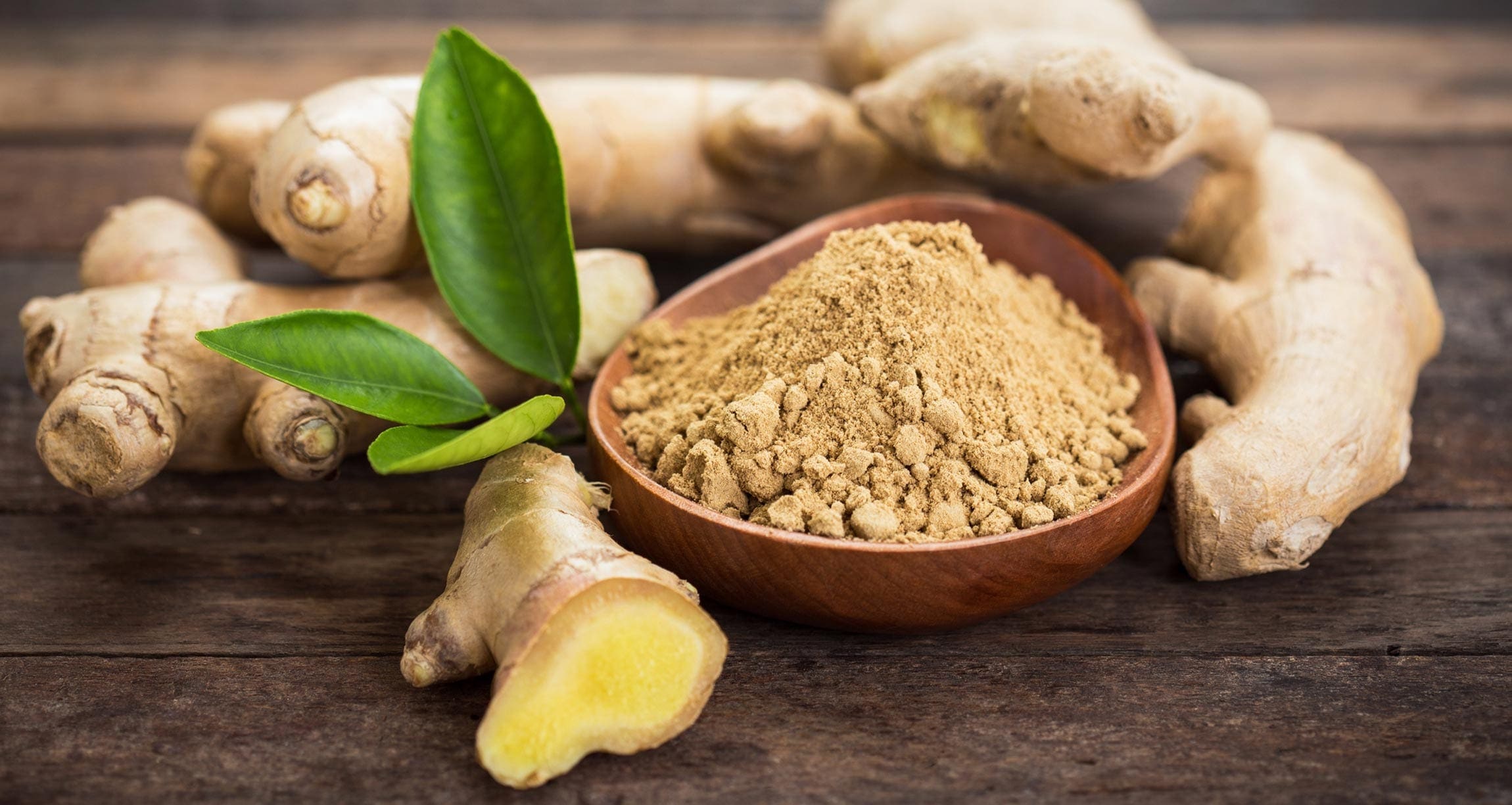
Ginger is a medicinal root plant that has been used for thousands of years. This root has been known to relieve motion sickness and nausea in the digestive system. Studies have shown that 70% of the immune system is found in the gut, and so it is highly essential that the digestive system in the body is working efficiently. Since ginger is made up of hundreds of compounds, some of them have potent antioxidants and can help support healthy inflammatory pathways in the body. Ginger can be found as a fresh root, dried, as an extract or oil, tinctures, capsules, and lozenges. Here are some of the foods that contain ginger to help the body fight the common cold or flu.
- Ginger tea
- Curry
- Gingerbread
- Cookies
- Gingersnaps
- Ginger ale
 “It is highly essential to stay hydrated during the cold and flu season. Ample fluids like water, coconut water, and herbal teas are the first line of defense.
“It is highly essential to stay hydrated during the cold and flu season. Ample fluids like water, coconut water, and herbal teas are the first line of defense.
Additionally, getting a good night’s sleep helps the immune system in the body recover faster. It is also essential to avoid eating foods like processed foods, alcohol, soda, fried foods, and dairy when it is cold and flu season. Since it can cause inflammation and aggravate the immune system when the body is trying to recover from being sick.”- Dr. Alex Jimenez D.C., C.C.S.T. Insight – Dr. Alex Jimenez D.C., C.C.S.T. Insight
Conclusion
All in all, when it is cold and flu season, people can start stocking up on these five remedies and taking antibiotics to get a head start on not getting sick. When the body does get sick, taking these remedies, getting lots and lots of rest, staying hydrated, and relaxing can ensure that the body will recover faster. Since food matters to people�s health, it�s vital to give the body the nourishment it needs for the cold and flu season.
October is Chiropractic Health Month. To learn more about it, check out Governor Abbott�s proclamation on our website to get full details on this declaration.
So the mechanisms of an autoimmune disease can be either by genetics or by environmental factors that can cause an individual to have problems in their body. There are many autoimmune diseases, both common and rare, that can affect the body. The scope of our information is limited to chiropractic, musculoskeletal and nervous health issues as well as functional medicine articles, topics, and discussions. We use functional health protocols to treat injuries or chronic disorders of the musculoskeletal system. To further discuss the subject matter above, please feel free to ask Dr. Alex Jimenez or contact us at 915-850-0900 .
References:
Biotics Education Team, Unknown. �5 Foods to Eat During the Cold & Flu Season.� Biotics Research Blog, 16 Sept. 2019, blog.bioticsresearch.com/5-foods-to-eat-during-the-cold-flu-season.
Borlinghaus, Jan, et al. �Allicin: Chemistry and Biological Properties.� Molecules (Basel, Switzerland), MDPI, 19 Aug. 2014, www.ncbi.nlm.nih.gov/pubmed/25153873.
Carr, Anitra C, and Silvia Maggini. �Vitamin C and Immune Function.� Nutrients, MDPI, 3 Nov. 2017, www.ncbi.nlm.nih.gov/pmc/articles/PMC5707683/.
Das, Arabinda, et al. �Garlic Compounds Generate Reactive Oxygen Species Leading to Activation of Stress Kinases and Cysteine Proteases for Apoptosis in Human Glioblastoma T98G and U87MG Cells.� Wiley Online Library, John Wiley & Sons, Ltd, 23 July 2007, onlinelibrary.wiley.com/doi/full/10.1002/cncr.22888.
Felman, Adam. �Antibiotics: Uses, Resistance, and Side Effects.� Medical News Today, MediLexicon International, 18 Jan. 2019, www.medicalnewstoday.com/articles/10278.php.
Newman, Tim. �Congestive Heart Failure: Causes, Symptoms, and Treatments.� Medical News Today, MediLexicon International, 3 Jan. 2018, www.medicalnewstoday.com/articles/156849.php.
Song, Fu-Young, et al. �The Activation of HO-1/Nrf-2 Contributes to the Protective Effects of Diallyl Disulfide (DADS) against Ethanol-Induced Oxidative Stress.� Biochimica Et Biophysica Acta (BBA) – General Subjects, Elsevier, 28 June 2013, www.sciencedirect.com/science/article/pii/S0304416513002882.
Surh, Y J, et al. �Chemoprotective Properties of Some Pungent Ingredients Present in Red Pepper and Ginger.� Mutation Research, U.S. National Library of Medicine, 18 June 1998, www.ncbi.nlm.nih.gov/pubmed/9675305.
Vighi, G, et al. �Allergy and the Gastrointestinal System.� Clinical and Experimental Immunology, Blackwell Science Inc, Sept. 2008, www.ncbi.nlm.nih.gov/pmc/articles/PMC2515351/.
Watson, Kathryn. �Apple Cider Vinegar for Colds.� Healthline, 22 Jan. 2018, www.healthline.com/health/apple-cider-vinegar-for-colds.
West, Helen. �How Garlic Fights Colds and The Flu.� Healthline, 17 Mar. 2016, www.healthline.com/nutrition/garlic-fights-colds-and-flu.
Yagnik, Darshna, et al. �Antimicrobial Activity of Apple Cider Vinegar against Escherichia Coli, Staphylococcus Aureus and Candida Albicans; Downregulating Cytokine and Microbial Protein Expression.� Scientific Reports, Nature Publishing Group UK, 29 Jan. 2018, www.ncbi.nlm.nih.gov/pmc/articles/PMC5788933/.
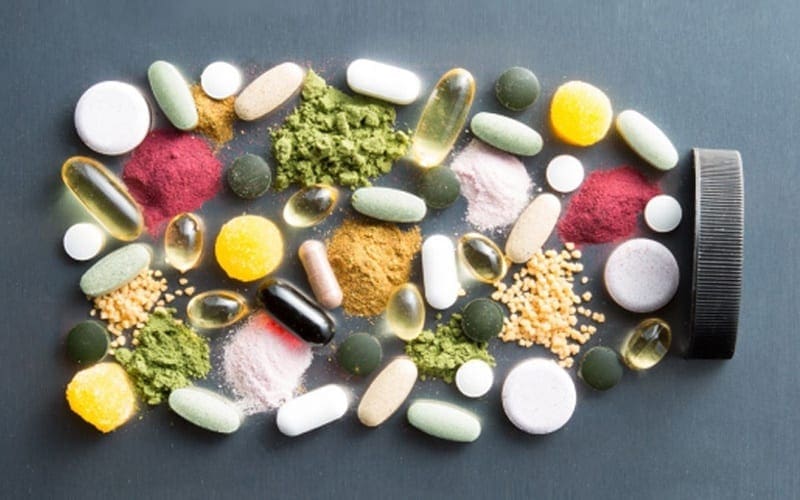
by Dr Alex Jimenez DC, APRN, FNP-BC, CFMP, IFMCP | Functional Medicine, Supplements, Wellness
Supplements are essential as we take them for our overall health. Since we can�t produce supplements naturally, we make it in pill form or eat whole, nutritious food. When we don�t take our supplements, our bodies will not function properly, and we can have a severe health risk. In the last article, we took a look at what vitamins does to our micronutrients in our bodies to perform functional and healthy. Today we will discuss what some supplement that will help our micronutrients in our bodies.
The Supplements
Since supplements can come in many types of foods and can be found as pills in whole food stores in the vitamin section.� Here are some of the leading supplements to ensure that your body’s micronutrients are getting the essentials to promote a long healthy life.
Vitamin K1 and K2
Vitamin K is known for its role in blood clotting. With vitamin K1 and K2, they can provide the health benefits that will help you from getting a blood clot. Vitamin K was accidentally discovered in the 1920s and 1930s after researchers found that animals having a restricted diet leads to excessive bleeding.
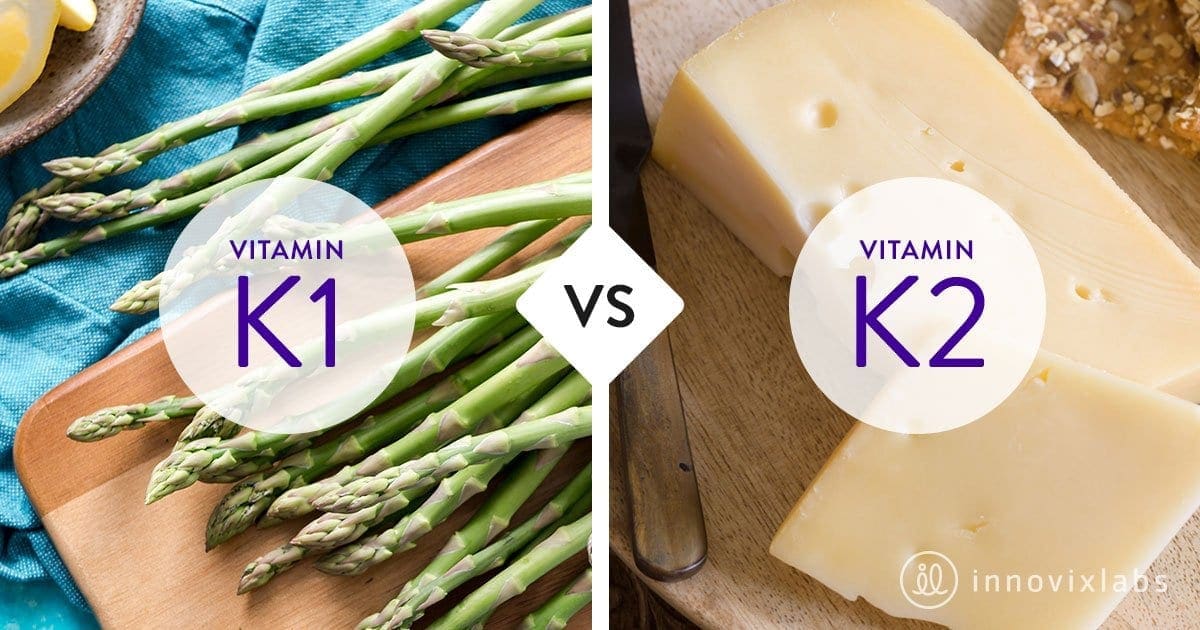
Vitamin K1 (phylloquinone) is found in plants foods like leafy green vegetables. With K2, it is found in fermented foods and animal products. Vitamin K2 (menaquinones) can be produced by gut bacteria and help promote a healthy gut. These two vitamins are fat-soluble that share the same chemical structure and have different effects on your health.
Vitamin K1 can be absorbed quickly than vitamin K2 and can stay in the bloodstream for hours. Vitamin K1 is transported primarily to and used by the liver. Even though vitamin K1 is mostly found in plant foods, here are some of the food sources that are caulked filled with this vitamin and amazing when cooked.
- Kale
- Collard greens
- Spinach
- Turnip greens
- Broccoli
- Brussel sprouts
Vitamin K2 is mostly found in animal products that contain fat. Even though it provides fatty compounds, vitamin K2�s long side-chain allows it to circulate the blood longer than K1 can remain in the blood for days.� Here are some fermented food sources and animal products that vitamin K2 as MK-10 and MK-11.
- Natto
- Pork sausage
- Hard cheeses
- Porkchop (with the bone)
- Chicken (leg/thigh)
- Soft cheeses
- Egg yolk
Calcium
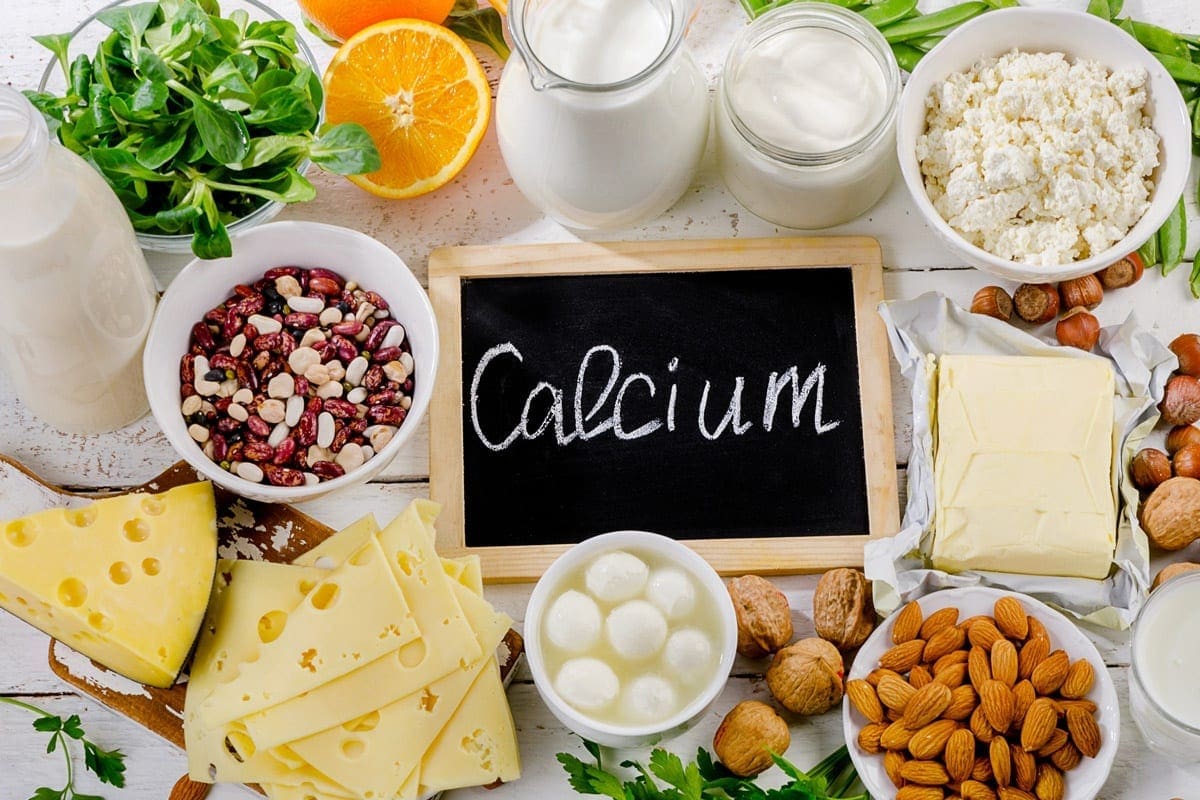
Calcium is one of the most essential supplements that is for all living organisms. It is found naturally in many foods and added to certain products like supplements. Calcium promotes bone health, and without it, bone density can happen when we don�t take in the supplement. It also helps regulate muscle contractions, including the beating of the heart muscle. When that happens, calcium helps the proteins in the muscle to carry out the work of the contraction. Here are some of the foods and drinks that are richly filled with calcium.
- Milk
- Cheese
- Yogurt
- Seaweed
- Beans
- Figs
- Tofu
Manganese
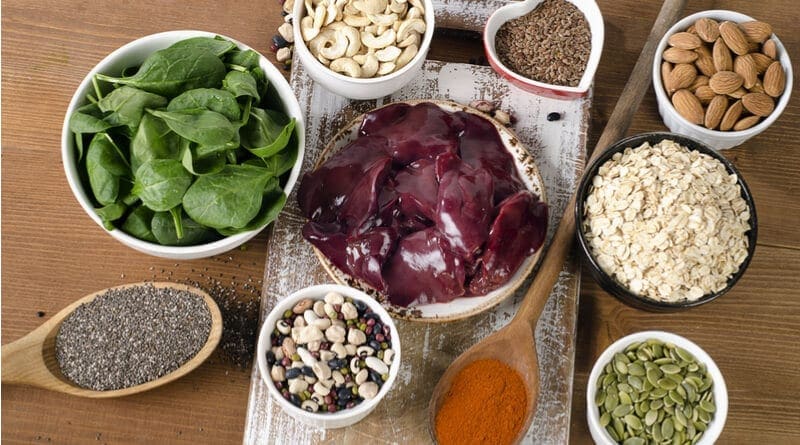
Manganese is an essential supplement for your brain and nervous system as well as many of your body�s enzyme system. Our body stores up to 20 mg of manganese in our kidneys, liver, pancreas, and bones. In a 2011 study, manganese helps form an antioxidant enzyme called SOD (superoxide dismutase). It helps break down one of the most dangerous free radicals called superoxide; into smaller components that are not harmful. Researchers also suggested that SOD is beneficial as a therapeutic agent for inflammatory diseases. Small amounts of manganese are present in these food sources.
- Raw pineapple and pineapple juice
- Pinto beans
- Spinach
- Black and green teas
- Sweet potato
- Almonds
- Instant oatmeal
Copper
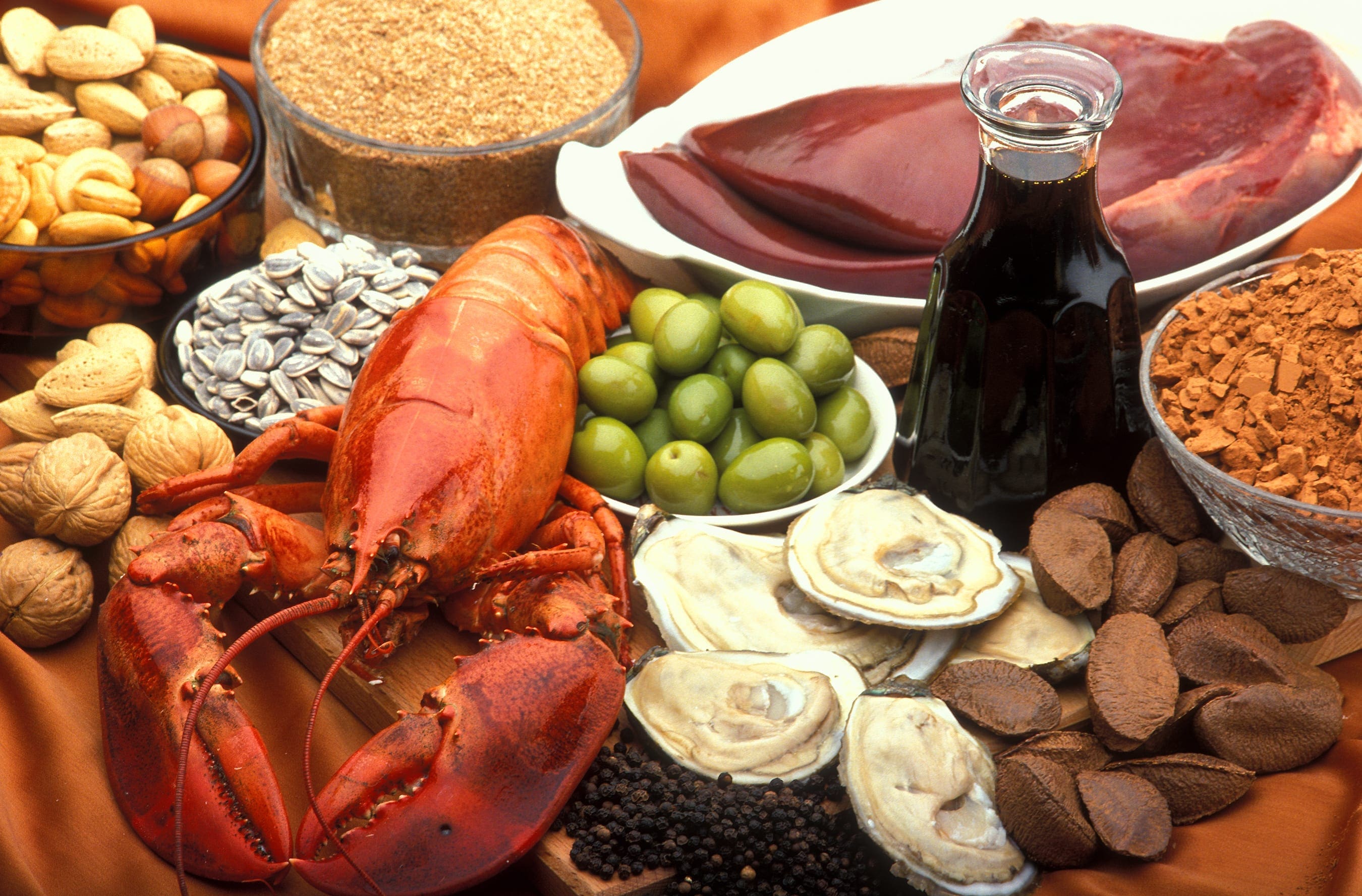
Copper is an essential trace supplement that is necessary for survival. It is found in all the body tissues and plays a vital role in making red blood cells, maintaining nerve cells and the immune system. When you have sufficient copper in your diet, it may help prevent cardiovascular diseases and osteoporosis. Copper deficiency is a rare case, but low levels of copper can lead to anemia, loss of skin pigmentation, thyroid problems, and the rare disease Menkes disease. Since copper is found in a wide variety of foods, here are some excellent food sources that contain it.
- Oysters and other shellfish
- Whole grains
- Cocoa
- Black pepper
- Organ meats (liver and kidneys)
- Potatoes
- Dried fruit
Chromium
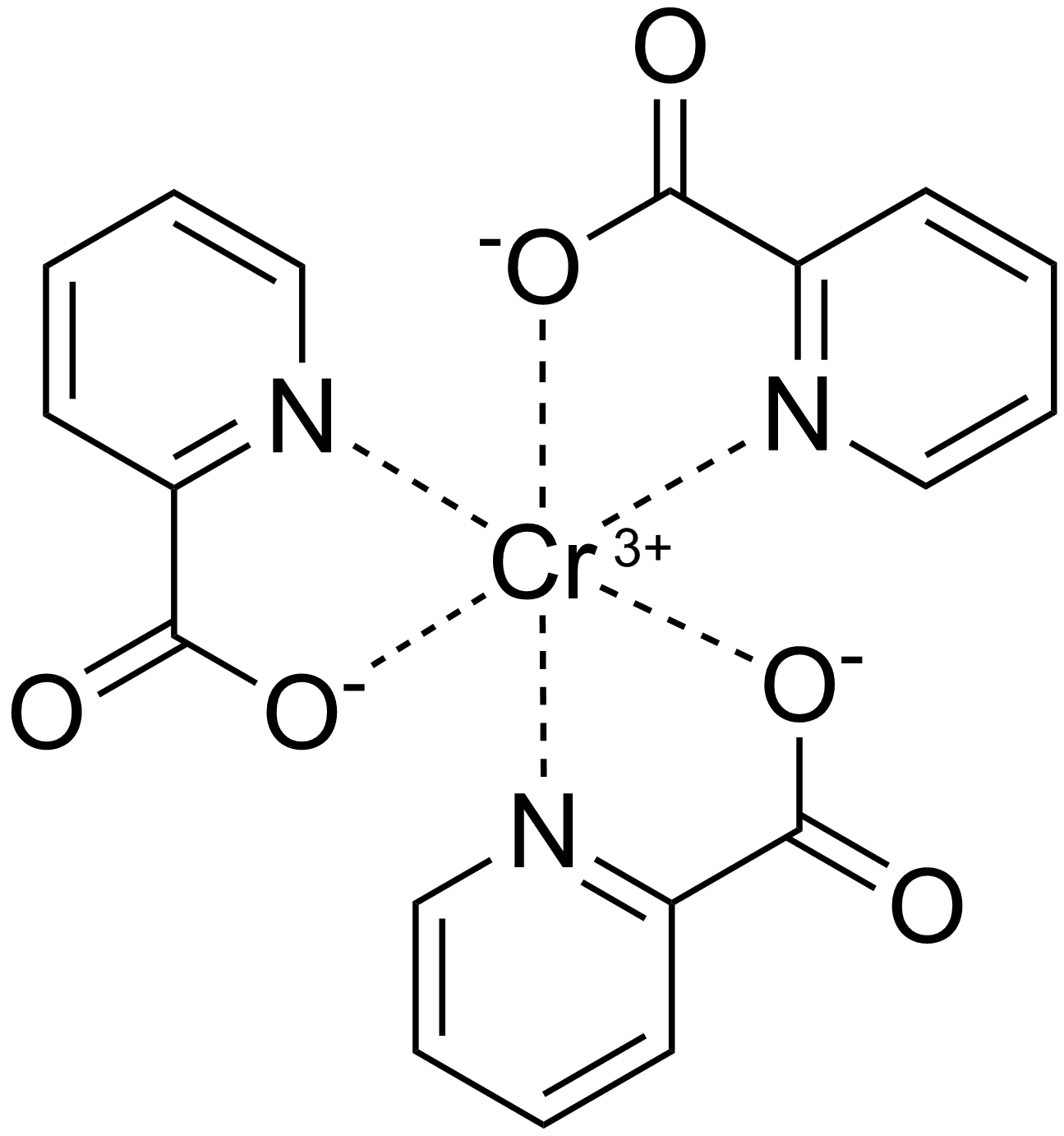
Also known as chromium picolinate, this supplement does serve several vital functions in the body. Chromium can improve your body�s blood sugar by impacting on the hormone insulin. Several studies indicate that people with diabetes take the chromium supplement to improve their blood sugar. While another study researched that people who are overweight or obese, taking the chromium supplement can lose weight.
Iron
Iron is one of the essential supplements that are vital to the human body. It helps hemoglobin function properly by transporting oxygen in the blood. Iron also plays a huge role as it functions in a variety of other vital processes in the body. With iron�s health benefits, the supplement can promote a healthy pregnancy, regulate body temperature, preserve universal energy and focus, help the gastrointestinal process, and support the immune system.
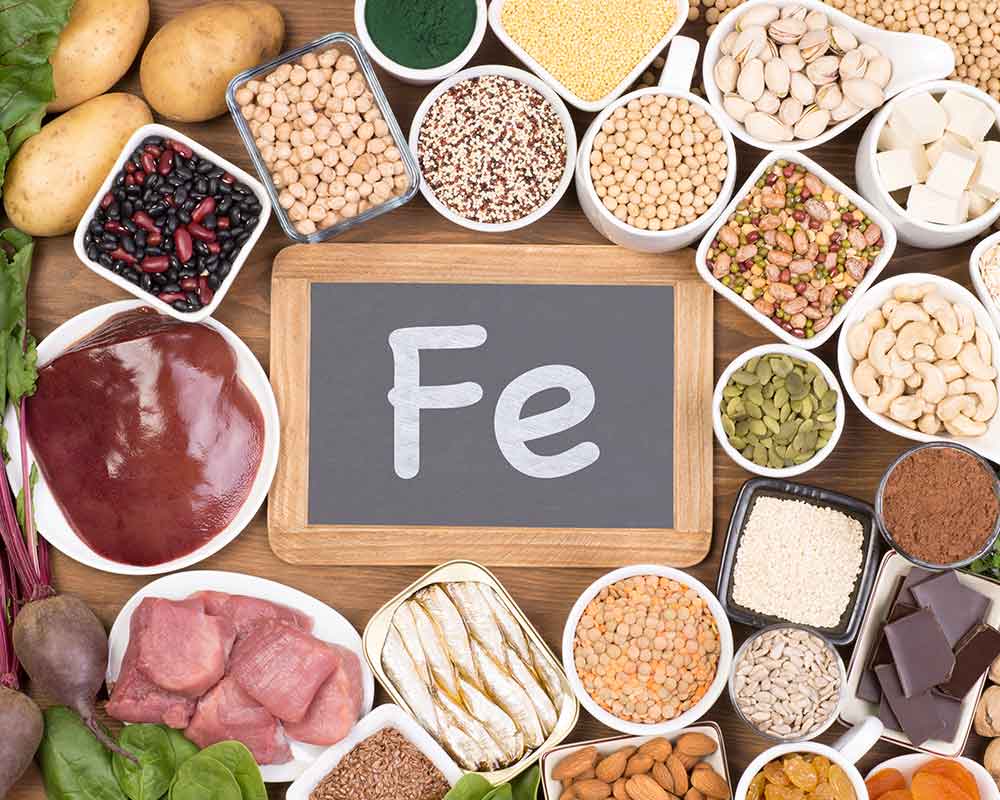
When we don�t get enough iron in our system, we do suffer from anemia, which causes fatigue, heart palpitations, pale skin, and breathless. So it is crucial that when we eat iron-rich foods so that way, we won�t have that deficiency. There are two types of dietary iron that we consumed, and they are known as heme and non-heme. These two forms are both animal source food and plant food, and here are what the food sources contain.
- Canned clams
- Cooked Pacific oysters
- Beef liver
- Lean ground beef
- Cooked spinach
- Dark chocolate
- Firm tofu
- Medium baked potato
Magnesium
Magnesium is an essential mineral that is found in the earth, sea, plants, animals, and humans. In our body, there is about 60% of magnesium in our bones. While the rest is in the muscles, soft tissues, and fluids, including blood. Magnesium helps to prevent problems with our bones, the cardiovascular system, diabetes and fights depression.
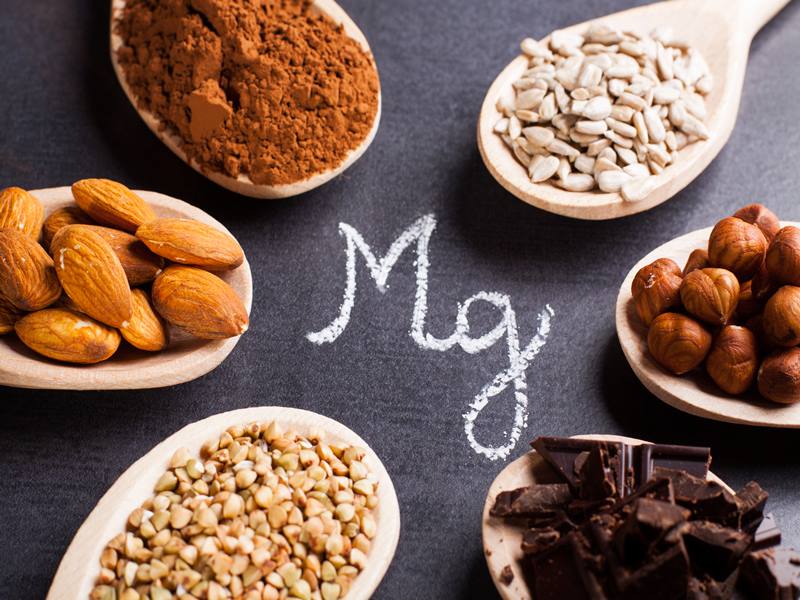
The recommended intake amount to take magnesium is 300-420mg per day for men and 310-320mg per day for women. We can get it from both food sources and supplements, here are some of the food sources that contain magnesium.
- Dark chocolate (70-85% cocoa)
- Cashews
- Quinoa, cooked
- Avocado
- Spinach, boiled
- Mackeral
Selenium
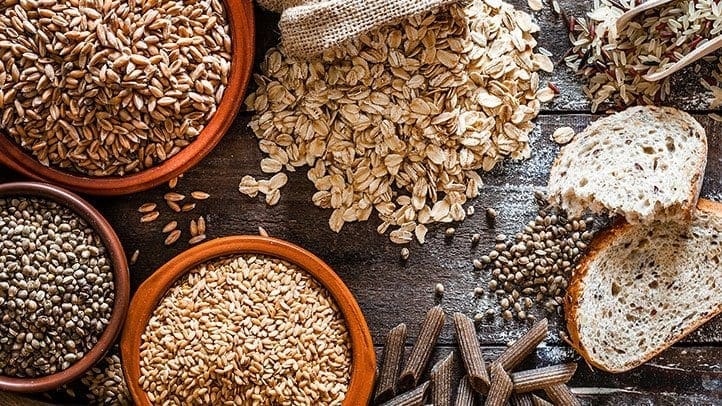
Selenium is an essential supplement that can help contribute thyroid hormone metabolism, process a healthy immune system, and protect against oxidative damage and infections in the body. Selenium deficiency is rare, but the supplement can be found in whole grains and animal products than fresh fruits and vegetables. Here are some of the food sources that contain selenium.
- Brazil nuts
- Tuna
- Brown rice
- White bread
- Egg
- Halibut
Omegas
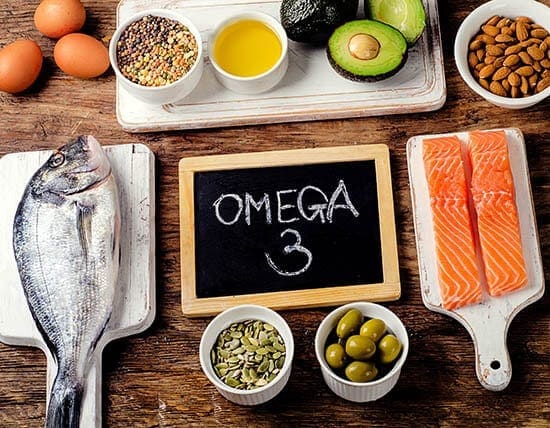
The Omega supplements are very well known, especially Omega-3; which can help us with our brain, eyes, and immune health. Without the supplement, it can lead to reduced energy, loss of attention and concentration, dry, irritated skin problems, and many more symptoms. It is mostly found in fish and seafood as well as some vegetables and seed oils. Here are some of the omega supplements to help promote a healthy body.
- DHA (docosahexaenoic acid): This omega supplement helps with muscle growth.
- DPA (docosapentaenoic acid): This omega supplement is the most influential on reducing inflammation and helping people who are profiled for cardiac risk.
- EPA (eicosapentaenoic acid): This omega supplement is vital to boost the brain and moods.
- LA (linoleic acid): This omega supplement can�t be synthesized in the body, but does help fight cancer. It is needed to help out with omega 3 and is primarily found in beef.
Conclusion
Granted that these are only some of the supplements here that can help your body function properly. There are many supplements and vitamins out there in the world that are in both pill and food form to help our bodies grow and overall makes us healthier. These supplements and vitamins help us by making sure that our bodies don�t get sick and suffer from chronic diseases that we may encounter. So go out there and enjoy some whole, nutritious food that oozing with beneficial vitamins and supplements.
Cites:
Almquist, H J. �Early History of Vitamin K.� OUP Academic, Oxford University Press, 1 June 1975, academic.oup.com/ajcn/article-abstract/28/6/656/4716361?redirectedFrom=fulltext.
Beulens, Joline W J, et al. �The Role of Menaquinones (Vitamin K?) in Human Health.� The British Journal of Nutrition, U.S. National Library of Medicine, Oct. 2013, www.ncbi.nlm.nih.gov/pubmed/23590754.
Brinton, Eliot A, and R Preston Mason. �Prescription Omega-3 Fatty Acid Products Containing Highly Purified Eicosapentaenoic Acid (EPA).� Lipids in Health and Disease, BioMed Central, 31 Jan. 2017, www.ncbi.nlm.nih.gov/pubmed/28137294.
Calder, Philip C. �Docosahexaenoic Acid.� Annals of Nutrition & Metabolism, U.S. National Library of Medicine, 2016, www.ncbi.nlm.nih.gov/pubmed/27842299.
DeLoughery, Thomas G. �Iron Deficiency Anemia.� The Medical Clinics of North America, U.S. National Library of Medicine, Mar. 2017, www.ncbi.nlm.nih.gov/pubmed/28189173.
Di Bona, Kristin R, et al. �Chromium Is Not an Essential Trace Element for Mammals: Effects of a �Low-Chromium� Diet.� Journal of Biological Inorganic Chemistry: JBIC: a Publication of the Society of Biological Inorganic Chemistry, U.S. National Library of Medicine, Mar. 2011, www.ncbi.nlm.nih.gov/pubmed/21086001.
Fu, Xueyan, et al. �Measurement of Multiple Vitamin K Forms in Processed and Fresh-Cut Pork Products in the U.S. Food Supply.� Journal of Agricultural and Food Chemistry, U.S. National Library of Medicine, 8 June 2016, www.ncbi.nlm.nih.gov/pubmed/27191033.
Goodson, Amy. �10 Evidence-Based Benefits of Manganese.� Healthline, Healthline Media, 31 Aug. 2018, www.healthline.com/nutrition/manganese-benefits.
Gr�ber, Uwe, et al. �Magnesium in Prevention and Therapy.� Nutrients, MDPI, 23 Sept. 2015, www.ncbi.nlm.nih.gov/pubmed/26404370.
Harshman, Stephanie G, et al. �Vegetables and Mixed Dishes Are Top Contributors to Phylloquinone Intake in US Adults: Data from the 2011-2012 NHANES.� The Journal of Nutrition, Oxford University Press, July 2017, www.ncbi.nlm.nih.gov/pubmed/28566528.
Kaur, Gunveen, et al. �Short Update on Docosapentaenoic Acid: a Bioactive Long-Chain n-3 Fatty Acid.� Current Opinion in Clinical Nutrition and Metabolic Care, U.S. National Library of Medicine, Mar. 2016, www.ncbi.nlm.nih.gov/pubmed/26808265.
Li, Chang, and Hai-Meng Zhou. �The Role of Manganese Superoxide Dismutase in Inflammation Defense.� Enzyme Research, SAGE-Hindawi Access to Research, 2011, www.ncbi.nlm.nih.gov/pmc/articles/PMC3185262/.
Megan Ware, RDN. �Copper: Health Benefits, Recommended Intake, Sources, and Risks.� Medical News Today, MediLexicon International, 23 Oct. 2017, www.medicalnewstoday.com/articles/288165.php.
Naughton, Shaan S, et al. �Linoleic Acid and the Pathogenesis of Obesity.� Prostaglandins & Other Lipid Mediators, U.S. National Library of Medicine, Sept. 2016, www.ncbi.nlm.nih.gov/pubmed/27350414.
Newman, Tim. �Calcium: Health Benefits, Foods, and Deficiency.� Medical News Today, MediLexicon International, 21 Aug. 2017, www.medicalnewstoday.com/articles/248958.php.
Schurgers, Leon J, et al. �Vitamin K-Containing Dietary Supplements: Comparison of Synthetic Vitamin K1 and Natto-Derived Menaquinone-7.� Blood, U.S. National Library of Medicine, 15 Apr. 2007, www.ncbi.nlm.nih.gov/pubmed/17158229.
Serefko, Anna, et al. �Magnesium in Depression.� Pharmacological Reports: PR, U.S. National Library of Medicine, 2013, www.ncbi.nlm.nih.gov/pubmed/23950577.
Suksomboon, N, et al. �Systematic Review and Meta-Analysis of the Efficacy and Safety of Chromium Supplementation in Diabetes.� Journal of Clinical Pharmacy and Therapeutics, Centre for Reviews and Dissemination (UK), June 2014, www.ncbi.nlm.nih.gov/pubmed/24635480.
Tian, Hongliang, et al. �Chromium Picolinate Supplementation for Overweight or Obese Adults.� The Cochrane Database of Systematic Reviews, John Wiley & Sons, Ltd, 29 Nov. 2013, www.ncbi.nlm.nih.gov/pubmed/24293292.
Yasui, K, and A Baba. �Therapeutic Potential of Superoxide Dismutase (SOD) for Resolution of Inflammation.� Inflammation Research: Official Journal of the European Histamine Research Society … [Et Al.], U.S. National Library of Medicine, Sept. 2006, www.ncbi.nlm.nih.gov/pubmed/17122956.
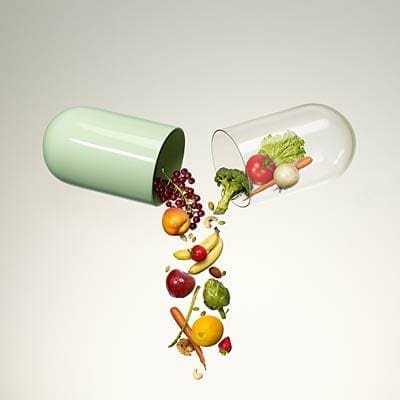
by Dr Alex Jimenez DC, APRN, FNP-BC, CFMP, IFMCP | Functional Medicine, Nutrition, Vitamins, Wellness
Mostly everyone takes their vitamins in any shape and form. It can be from the foods that we eat to the supplements and vitamins pills that we make throughout the day. We can get the boost of micronutrients in our bodies with vitamins and foods. It can help with our diets when we are trying to get a head start in our healthy lifestyle change through healthy, nutritious, whole foods. Without it, it can cause our bodies to react differently with ailments. For example, a person has a healthy lifestyle, but they are feeling out of place in their daily lives; it might be due to their low levels of the vitamins they are not taking. We will be taking a look at the micronutrition in vitamins and supplements in this two-part series for the body.
The Vitamins
Vitamins are essential for the body since we can�t produce them naturally. When we feel sluggish or horrible, it might be due to the low vitamin intake that we are missing to make us feel better. Here are some of the vitamins that can help your body if you feel a bit weak in life.
Vitamin A
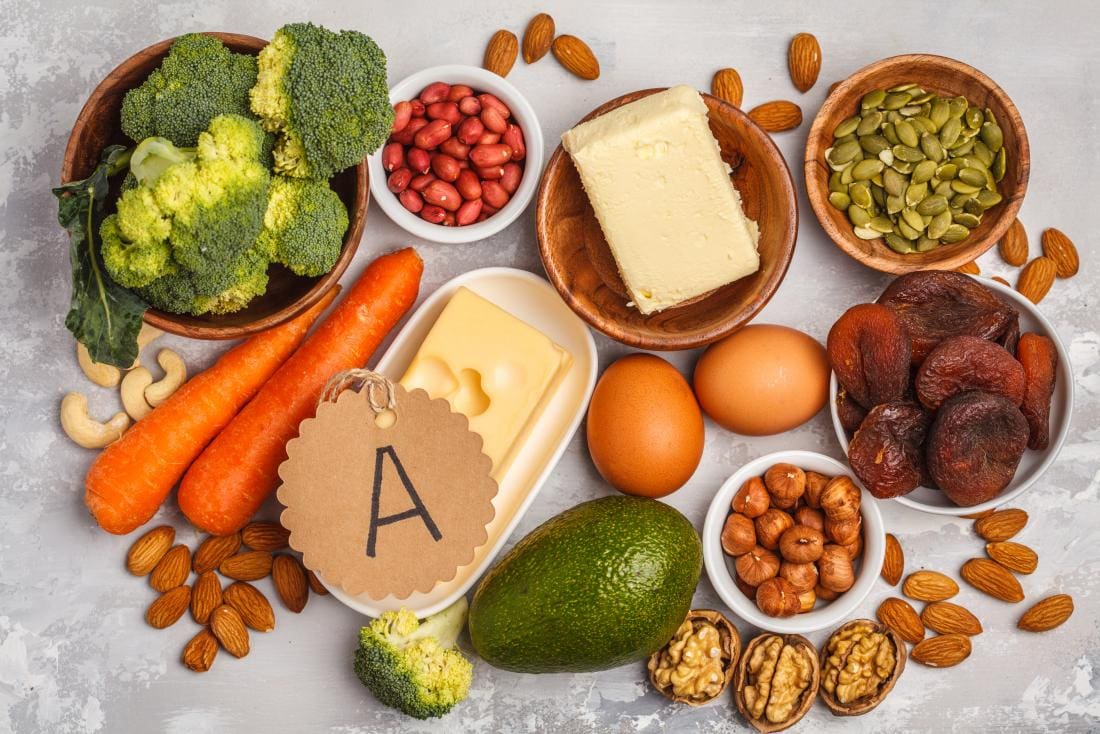
Vitamin A is a fat-soluble compound that is an essential nutrient for the body. It is stored in the liver for later use and is transferred to the tissues when needed. Vitamin A helps maintain the integrity and function of all surface tissues and the eyes. Vitamin A has two forms which are retinol and retinyl esters and provitamin A carotenoids. Retinol and retinyl esters health benefits can help prevent macular degeneration to your eyes, and with the provitamin A carotenoids can have potent antioxidants to fight off free radicals in your body.
Deficiencies: Having a Vitamin A deficiency can lead to blindness in the eyes of some people. Anyone who has a deficiency in Vitamin A can have skin issues like hyperkeratosis and acne. Not only that, but it can increase any infections as well as have pregnancy complications for pregnant women.
Food Sources: Here are some of the foods that are very rich with vitamin A that are all carotenoid-rich in both animals and plants.
- Egg yolks
- Beef liver
- Cod liver oil
- Salmon
- Sweet potatoes
- Carrots
- Dandelion greens
- Cabbage
Vitamin B

All B vitamins are water-soluble, and your body can�t store them. They are used to reduce fatigue and boost your mood. There are 8 B vitamins are vital and have many essential functions for maintaining good health.
- B1 (thiamine): Thiamine helps our bodies metabolism by helping convert nutrients into energy. Some food sources include pork, sunflower seeds, and wheat germ.
- B2 (riboflavin): Riboflavin converts food into energy and acts as an antioxidant in the body. Some of the food sources that are high in riboflavin are organ meats, beef, and mushrooms.
- B3 (niacin): Niacin plays a role in cellular signaling, metabolism and DNA productions, as well as repairs it as well. Some food sources include chicken, tuna, and lentils.
- B5 (pantothenic acid): Like other B vitamins, pantothenic acid helps our bodies obtain energy from the food we eat. It also involves hormone and cholesterol production. Some food sources include liver, fish, yogurt, and avocado.
- B6 (pyridoxine): Pyridoxine helps produces red blood cells in the body. It helps create amino acid metabolism and neurotransmitters for the body. Foods that are highly rich with this vitamin are chickpeas, salmon, and potatoes.
- B7 (biotin): Biotin is highly essential for carbohydrate and fat metabolism and can regulate gene expression in the body. The best food sources that contain biotin are yeast, eggs, salmon, cheese, and liver.
- B9 (folate): Our bodies need folate for cell growth, amino acid metabolism, the formation of red and white blood cells as well as proper cell division. Folate can be found in foods like leafy greens, liver, beans and in supplements like folic acid.
- B12 (cobalamin): One of the best- known of all the B vitamins, B12 is vital for neurological function, DNA production, and red blood cell count. It can be found naturally in animal food sources like meats, eggs, seafood, and dairy.
Deficiencies: Even though taking the B vitamins are essential, there are side effects to taking a high dose of the vitamin, especially B3 and B6. Some of the side effects include vomiting, high blood sugar levels, skin lesions, nerve damage, and even liver damage.
Vitamin C
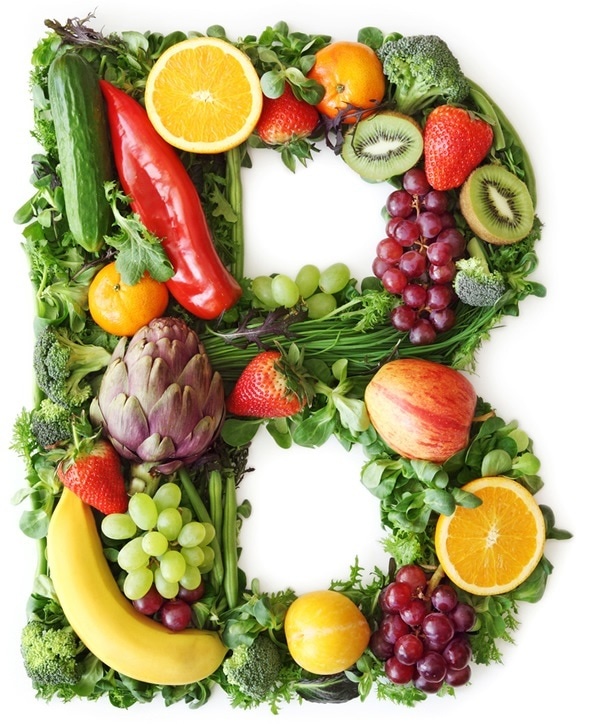
Vitamin C is one of the most essential vitamins since it can�t be produced by the body. It has so many roles and has been linked to many impressive health benefits. It can help boost antioxidant levels, reduce high blood pressure, and heart disease risk. It can protect your body against any gout attacks and reduce your risk of dementia while improving your iron absorption and boosting your immunity.
Deficiencies: When you don�t take enough vitamin C, it can raise up your blood sugar. Without it, you can develop scurvy if you don�t have enough of vitamin C in your system. You can get really sick, and your immune system will be shot if you don�t take vitamin C.
Food Sources: The most common way to get vitamin C in your body is through citrus fruit. There are lots of foods that contain vitamin C and are very delicious.
- Red and green peppers
- Oranges and orange juice
- Kiwi
- Guava
- Broccoli
- Strawberries
- Brussel sprouts
- Tomato juice
- Cantaloupe
Vitamin D3
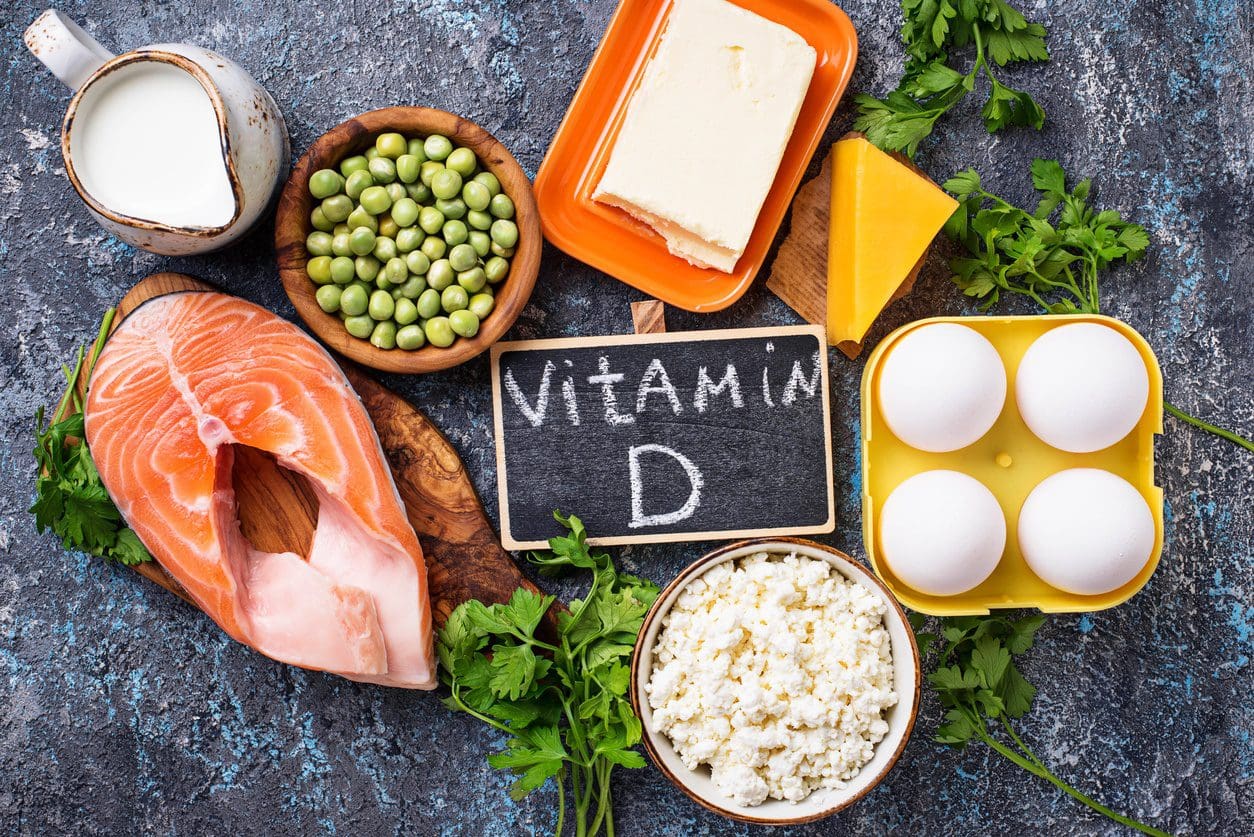
Also known as the sunshine vitamin, vitamin D3 is essential for maintaining healthy bones and teeth. It can support the immune system, brain, and nervous system by keeping it healthy. It will even regulate insulin levels and help managing diabetes. However, vitamin D3 can be synthesized to our body whenever sunlight hits our skin.
Deficiencies: Even though the body can create vitamin D, there many reasons that vitamin D deficiency can occur. If a person has a darker skin color and uses sunscreen to reduce the absorption of UVB (ultraviolet radiation B) rays from the sun. They can stop the production of vitamin D. Some of the symptoms of vitamin D deficiency include getting sick more, fatigue, muscle pain, and depression. And if it continues for long periods, it can lead to obesity, diabetes, hypertension, chronic fatigue syndrome, fibromyalgia, and osteoporosis, just to name a few.
Food Sources: There are a few foods that contain vitamin D naturally. And for vitamin D3 it is mostly animal produced.
- Salmon
- Sardines
- Egg yolk
- Shrimp
- Milk (fortified)
- Cereal (fortified)
- Yogurt (fortified)
Vitamin E
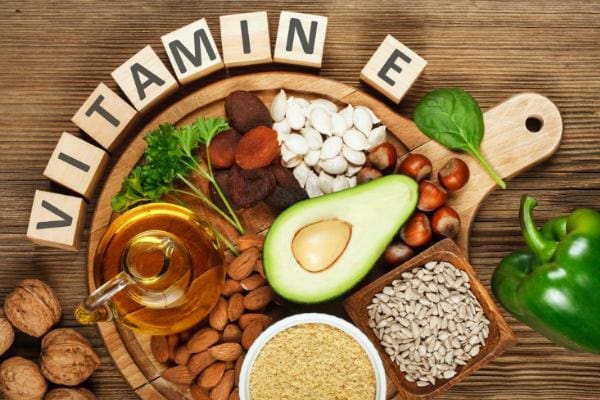
Vitamin E is one of the most essential nutrients that is available as a dietary supplement and can occur naturally in foods. It is an antioxidant that can help protect your cells damage and is fat-soluble. Researchers have investigated that vitamin E can be used as a treatment for various degenerative diseases, including high blood pressure, heart disease, and cancer. It is a rare case for a vitamin E deficiency; however, it is a rare condition that is being researched.
Since Vitamin E is the most common nutrient found in most foods, here are some of the foods, including cooking oils that are exceptional.
- Wheat Germ Oil
- Sunflower seeds
- Almonds
- Hazelnut Oil
- Goose meat
- Peanuts
- Mango
Conclusion
So with these vitamins, it can help your body feel so much better in the long run. Without them, our bodies will have various health problems that can hurt us in the long haul. When we take these vitamins, our bodies began to heal properly, and we can see that our moods are a bit better. We can have normal functions without the vitamins because we eat the food that contains them, but when we need that extra boost of energy, vitamins are the way to go.
Cites:
Basavaraj, K H, et al. �Diet in Dermatology: Present Perspectives.� Indian Journal of Dermatology, Medknow Publications, 2010, www.ncbi.nlm.nih.gov/pmc/articles/PMC2965901/.
Chiu, Zelia K, et al. �Patterns of Vitamin D Levels and Exposures in Active and Inactive Noninfectious Uveitis�Patients.� Ophthalmology, U.S. National Library of Medicine, 11 July 2019, www.ncbi.nlm.nih.gov/pubmed/31519386.
Choi, Hyon K, et al. �Vitamin C Intake and the Risk of Gout in Men: a Prospective Study.� Archives of Internal Medicine, U.S. National Library of Medicine, 9 Mar. 2009, www.ncbi.nlm.nih.gov/pubmed/19273781.
Ettarh, R R, et al. �Vitamin C Lowers Blood Pressure and Alters Vascular Responsiveness in Salt-Induced Hypertension.� Canadian Journal of Physiology and Pharmacology, U.S. National Library of Medicine, Dec. 2002, www.ncbi.nlm.nih.gov/pubmed/12564647.
Institute of Medicine (US) Panel on Micronutrients, Unknown. �Vitamin A.� Dietary Reference Intakes for Vitamin A, Vitamin K, Arsenic, Boron, Chromium, Copper, Iodine, Iron, Manganese, Molybdenum, Nickel, Silicon, Vanadium, and Zinc., U.S. National Library of Medicine, 1 Jan. 1970, www.ncbi.nlm.nih.gov/books/NBK222318/.
Kubala, Jillian. �Vitamin A: Benefits, Deficiency, Toxicity and More.� Healthline, 4 Oct. 2018, www.healthline.com/nutrition/vitamin-a.
Martel, Julianna L. �Vitamin B1 (Thiamine).� StatPearls [Internet]., U.S. National Library of Medicine, 14 Aug. 2019, www.ncbi.nlm.nih.gov/books/NBK482360/.
Megan Ware, RDN. �Vitamin D: Health Benefits, Facts, and Research.� Medical News Today, MediLexicon International, 13 Nov. 2017, www.medicalnewstoday.com/articles/161618.php.
Meyer-Ficca, Mirella, and James B Kirkland. �Niacin.� Advances in Nutrition (Bethesda, Md.), American Society for Nutrition, 16 May 2016, www.ncbi.nlm.nih.gov/pmc/articles/PMC4863271/.
N/A, Unknown. �Office of Dietary Supplements – Vitamin E.� NIH Office of Dietary Supplements, U.S. Department of Health and Human Services, 0AD, ods.od.nih.gov/factsheets/VitaminE-HealthProfessional/.
O’Leary, Fiona, and Samir Samman. �Vitamin B12 in Health and Disease.� Nutrients, Molecular Diversity Preservation International, Mar. 2010, www.ncbi.nlm.nih.gov/pmc/articles/PMC3257642/.
Ozuguz, Pinar, et al. �Evaluation of Serum Vitamins A and E and Zinc Levels According to the Severity of Acne Vulgaris.� Cutaneous and Ocular Toxicology, U.S. National Library of Medicine, June 2014, www.ncbi.nlm.nih.gov/pubmed/23826827.
Pham-Huy, Lien Ai, et al. �Free Radicals, Antioxidants in Disease and Health.� International Journal of Biomedical Science : IJBS, Master Publishing Group, June 2008, www.ncbi.nlm.nih.gov/pubmed/23675073.
Senoo, Haruki, et al. �Hepatic Stellate Cell (Vitamin A-Storing Cell) and Its Relative–Past, Present and Future.� Cell Biology International, U.S. National Library of Medicine, Dec. 2010, www.ncbi.nlm.nih.gov/pubmed/21067523.
Wong, Cathy. �Benefits of Vitamin C You May Not Know About.� Verywell Health, Verywell Health, 17 July 2019, www.verywellhealth.com/the-benefits-of-vitamin-c-supplements-89083.
Zempleni, Janos, et al. �Biotin.� BioFactors (Oxford, England), U.S. National Library of Medicine, 2009, www.ncbi.nlm.nih.gov/pubmed/19319844.





















 “It is highly essential to stay hydrated during the cold and flu season. Ample fluids like water, coconut water, and herbal teas are the first line of defense.
“It is highly essential to stay hydrated during the cold and flu season. Ample fluids like water, coconut water, and herbal teas are the first line of defense.

















